A “Just For The Hell Of It”, Slightly Obsessed Halloween Special!
A Friendly Word Of Warning:
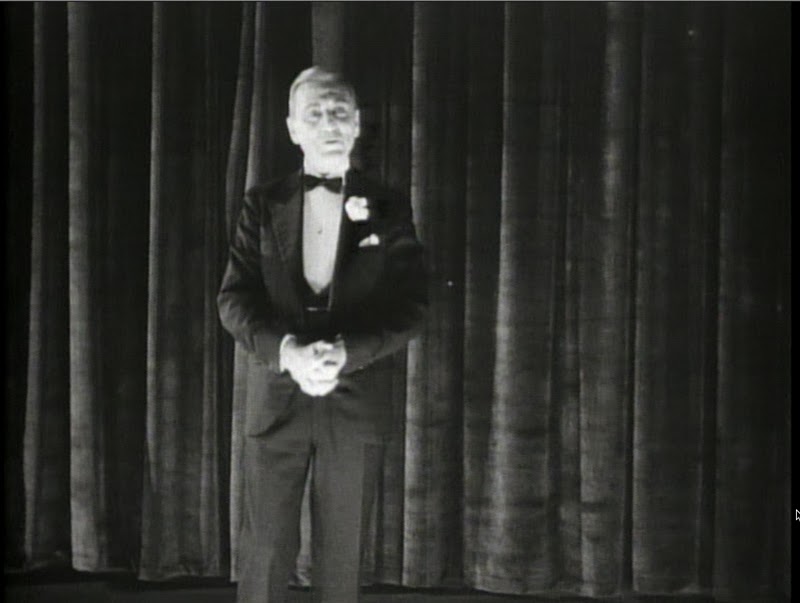
The following ill-conceived venture dates back 5 or 6 years when I toiled as a native English-speaking teaching assistant in two South Korean middle schools. As part of my job was to enact a role as unofficial cultural ambassador for The West, this included designing English lessons around various customs and cultural practices in my country of origin, particularly holidays. Halloween is, was, and always will be my favorite holiday, so I tried to make the “Halloween Lesson” extra special. The Simpsons, particularly its Halloween episodes, was also always special to me, so I thought I could make it all special to the kids by combining two passions into one convenient lesson.
Basically, I took one of the show’s early Halloween episodes and attempted to identify and explain every trivia(l) reference in the course of the show’s 24-minute running time. What I quickly came to realize, though, on this most referential of TV shows — perhaps the most reference-laden show up to that point in the history of the medium — was that such a project, such an undertaking, was grand folly on a scale rarely contemplated outside of Custer riding into Little Big Horn one fine June morning and blithely announcing, “What ho, Sioux buddies!” So I quickly abandoned the idea of possibly turning Treehouse of Horror III into a “lesson” (I still showed it to the kids, though) and instead decided, more for my Slightly Obsessed self than anyone, to plow through the admittedly ridiculous undertaking as a sort of Andy Kaufmanesque performance piece disguised as TV/movie/pop culture “criticism”.
Below is the fruit of that folly, a 5000-word, 120+-image “photo-essay” that succeeds neither as a collage of photos nor as a coherent essay, but rather throws, nay *hurls*, random images and obscure trivia at whomever risks exploding their internet browser by scrolling through it. So, in the spirit of the season, I hope you enjoy it. I’ll let myself of 5 or 6 years ago take over from here…
Despite being the most mercilessly-dissected program this side of Star Trek or Doctor Who, I’ve nonetheless embarked, perhaps heedlessly, on a massive spot-the-reference project on an early episode of The Simpsons.
Why?, you might ask. Why not?, I might answer. Basically, I think that The Simpsons, particularly in its earlier years, was possibly the most densely-laden, media-savvy show in the history of television; and in order to prove it I’ve taken a random episode and attempted to unpack/explain/belabor every single, solitary point of pop cultural and historical reference on a minute-by-minute, second-by-second basis.
In the spirit of the coming season, then, the episode in question is Treehouse of Horror III (mistakenly titled The Simpsons Halloween Special in the title sequence), which originally aired on the Fox network, Thursday, October 29, 1992 at 7:00 pm, CST. I’ll split the ‘analysis’ — such as it is — into 4 parts: Prologue (covering the ‘warning to parents’, title sequence, and introduction), Clown Without Pity, King Homer, and Dial Z for Zombie. I’ll begin each part with a brief contextual description of some of the larger, more over-arching references in the segment. Then, in sequence, I’ll tie passing references and ‘freeze frame gags’ to particular time markers within the segment.
My timing leaves much to be desired, but still, I’ll try to provide exact-as-possible minute and second markers for the latter (e.g. : between 00:51 – 1:09: such and such…; at 4:12: something or other…; etc.).
Finally, my viewing of the episode is based on the Region 3* DVD release of The Complete Fourth Season.
(*Contrary to Simpsons DVD information on Wikipedia, The Complete Simpsons DVD series does exist on Region 3 and is presumably identical to the Regions 1, 2, 4, and 5 releases.)
I: Prologue

Context: “GOOOOD EE-ve-nEEng”: Homer steps into a rotund silhouette caricature — which Homer is, in fact, larger than. Homer seems to have a couple pounds on esteemed film director Alfred Hitchcock, who stepped into that very same shadow each week on his 1955-1962 horror/suspense anthology series, Alfred Hitchcock Presents. The “warning to parents” is a holdover from the two previous Treehouse of Horror specials, where the office was previously performed by Marge. The Red Screen in back of Homer is another holdover, originally a play on a sequence from the 1931 Frankenstein, where actor Edward Van Sloan stepped from behind a curtain to offer a “friendly warning” about the “thrilling, shocking, and horrifying” nature of what the audience was about to see.

Edward Van Sloan’s “friendly warning” from Frankenstein (1931)
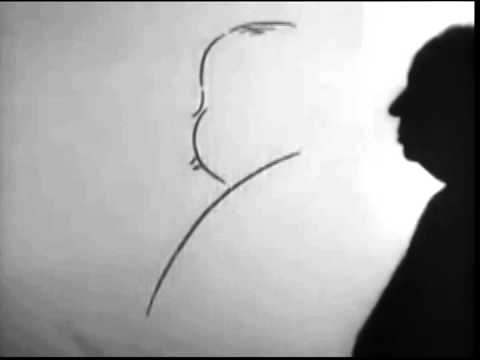
weekly opening for Alfred Hitchcock Presents (1955 – 1962)
00:51 – 1:09:


Title Sequence Tombstones:
— Drexel’s Class: An early 90s canceled Fox sitcom that followed The Simpsons during the show’s first seasons.

— “I’m With Stupid”: A very annoying T-Shirt label that enjoyed its greatest popularity in the late 80s.

— R. Buckminster Fuller: 20th century inventor/architect most famous for designing the geodesic dome.

— Slapstick: An enduring comedy form that will never leave us, thankfully…evidenced by the still-open grave at the base of the tomb marker.
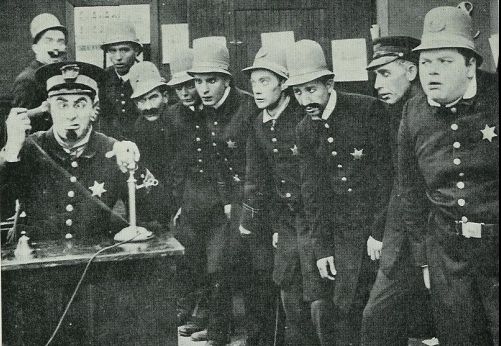
— crumbling American Workmanship tomb: The beginning of the end…

1:09 – 1:21:

Couch Gag:
Skeleton versions of the Simpsons family rush in and sit on the family couch.
— Marge’s hair has a white lightning streak running its length, like Elsa Lanchester as The Bride of Frankenstein.
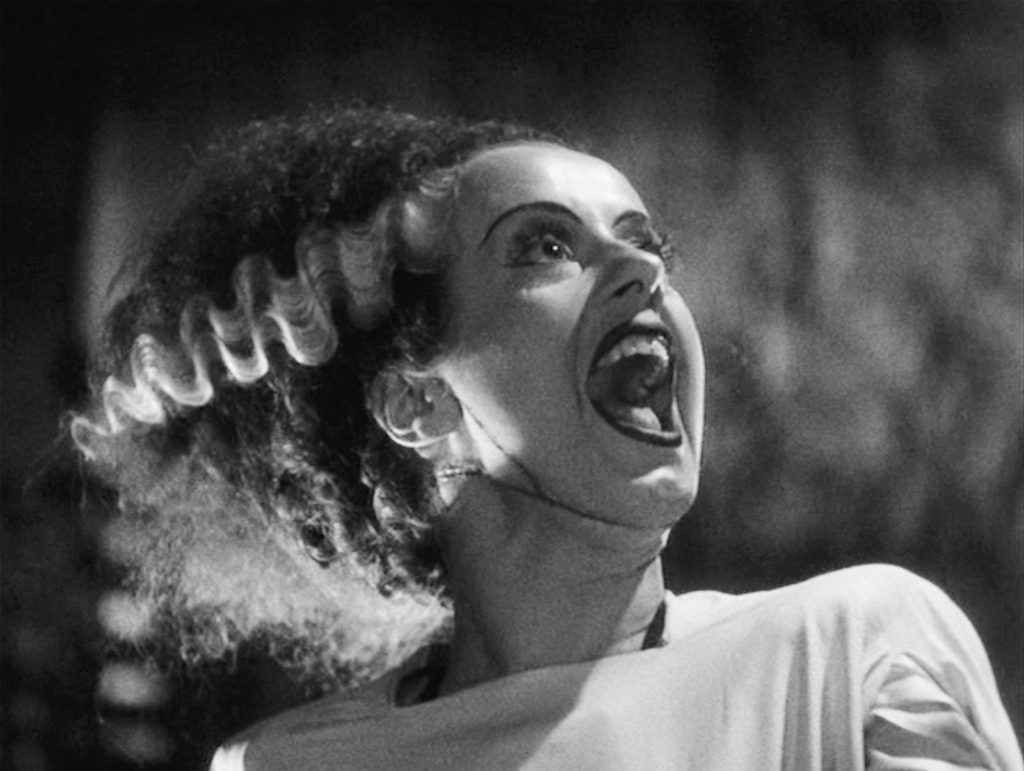
— Homer appears to be a dead-ringer for cro-magnon man in the old ape-to-man evolution pictures.
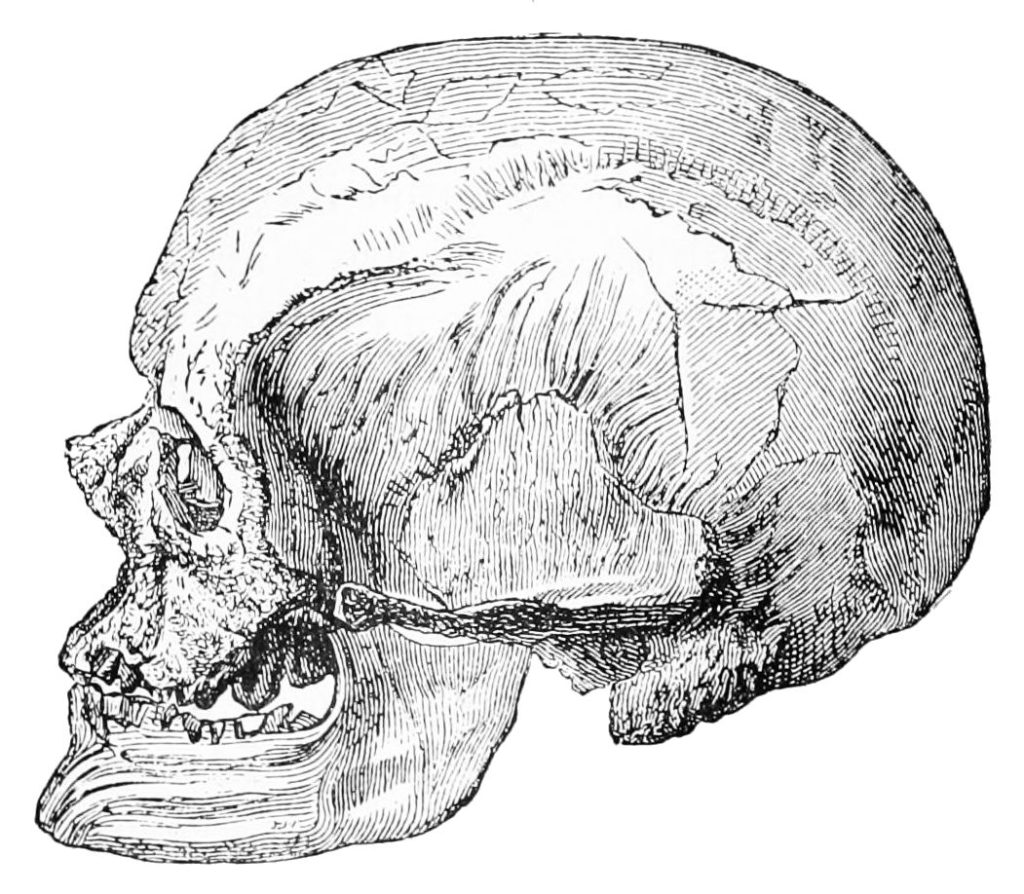
1:24 – 2:43:

Halloween Costumes:
Bart: Alex from A Clockwork Orange
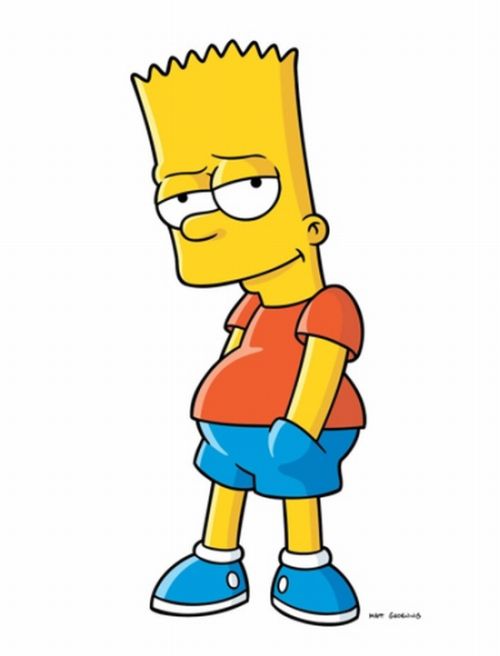
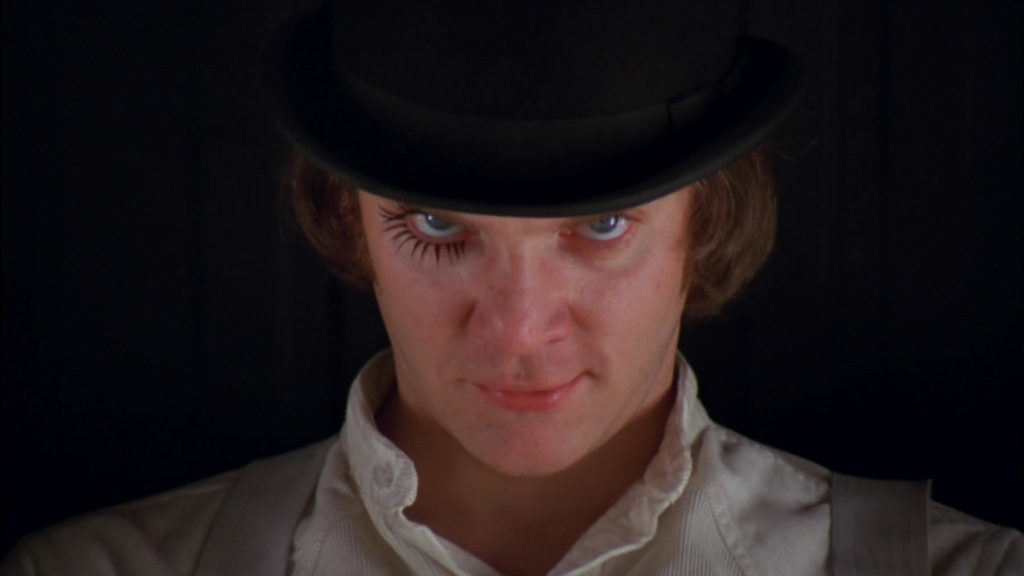
Homer: Julius Caesar…disrobed on the staircase banister


Milhouse: Radioactive Man — the superhero of a Simpsons-universe comic book.

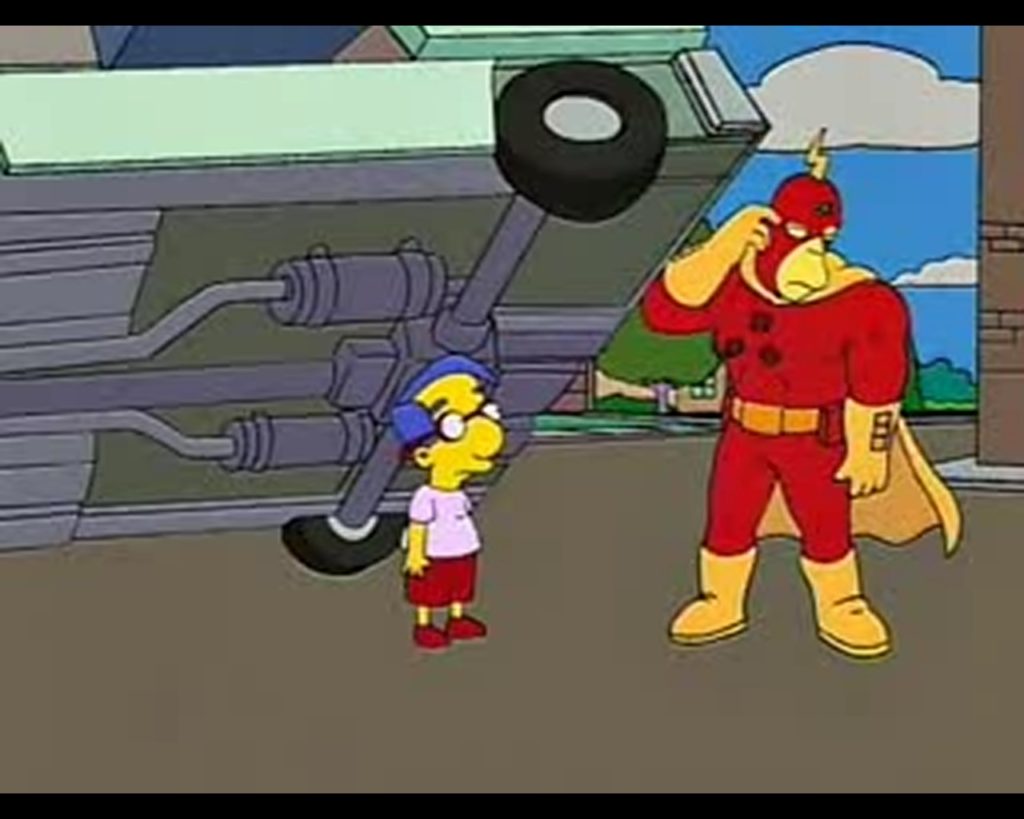
Lisa: Statue of Liberty
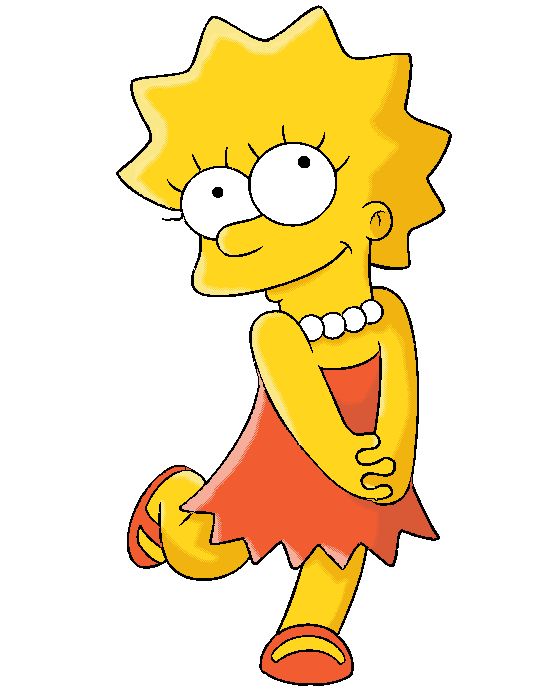

Martin: Calliope, “muse of heroic poetry”: particularly that of Homer’s — the ancient Greek epic poet, I mean…not the Simpson patriarch. Calliope, a daughter of Zeus, was also mother of Orpheus, “father of songs” in Greek mythology. A suitably esoteric choice for the classic “odd child” of the Simpsons universe.
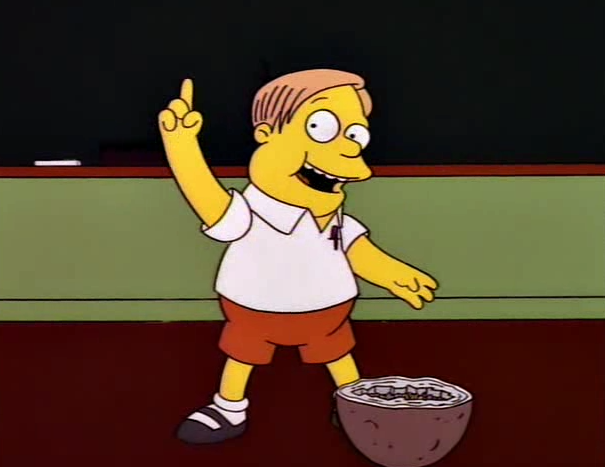
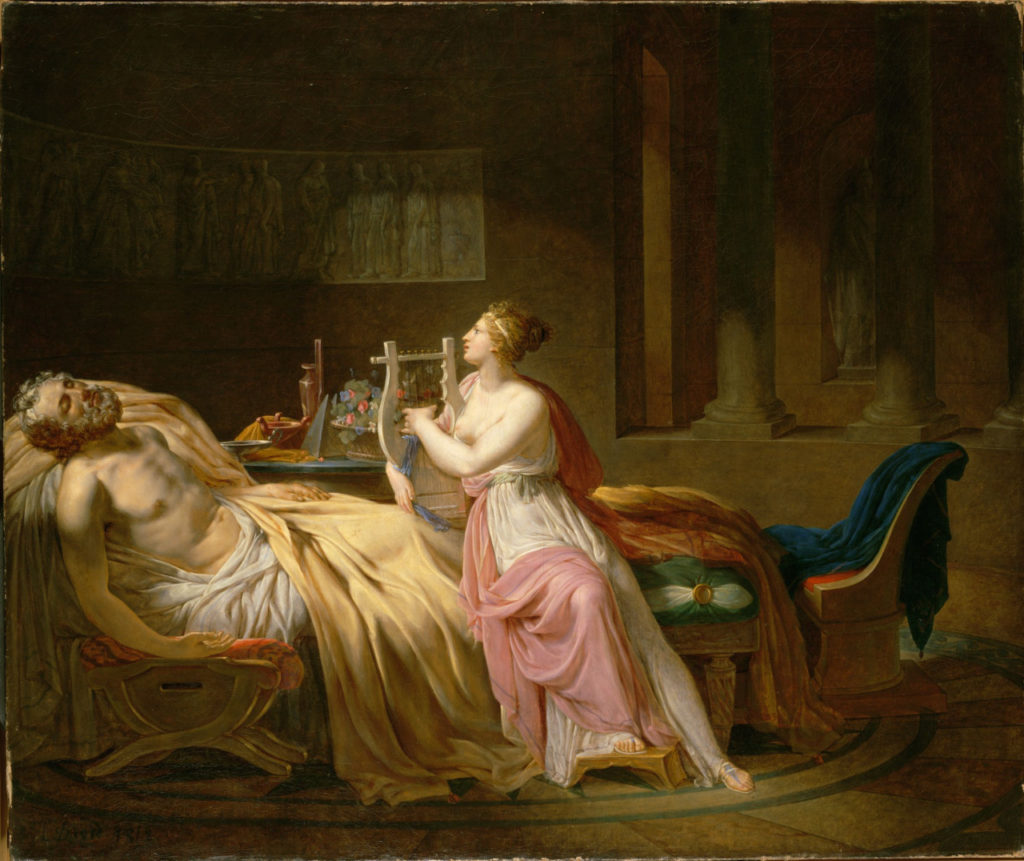
Marge: Cleopatra, with a snake armlet. Popular legend has it that Cleopatra died from the poisonous bite of an asp.

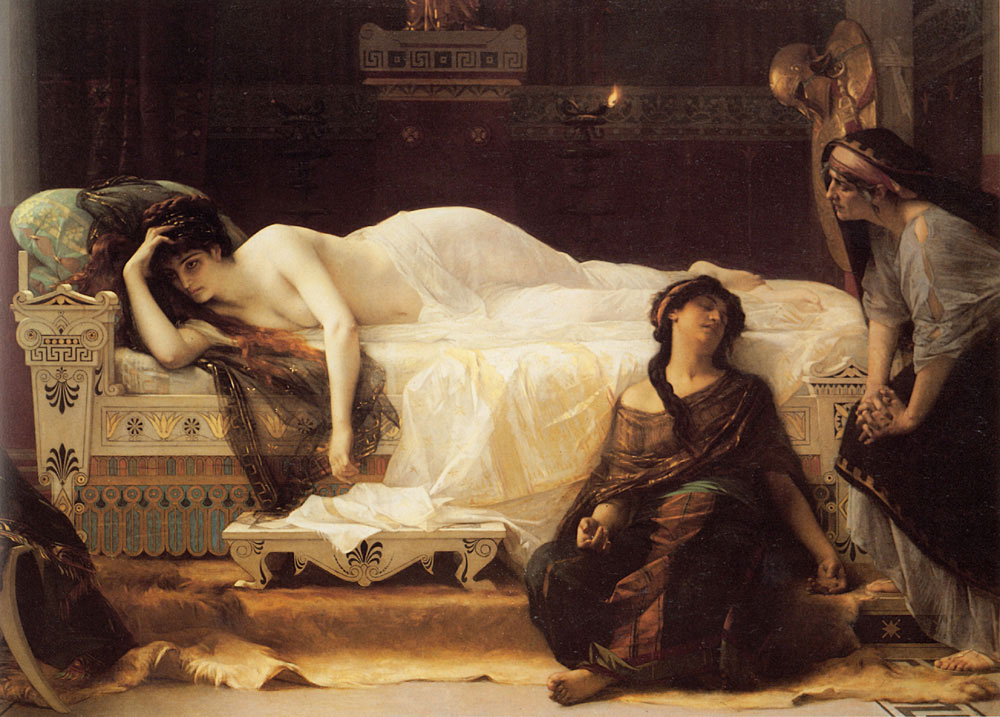
Lewis: Frankenstein’s Monster from the 1931 Frankenstein.
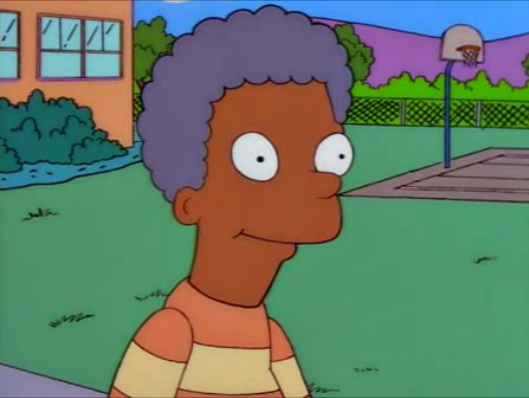
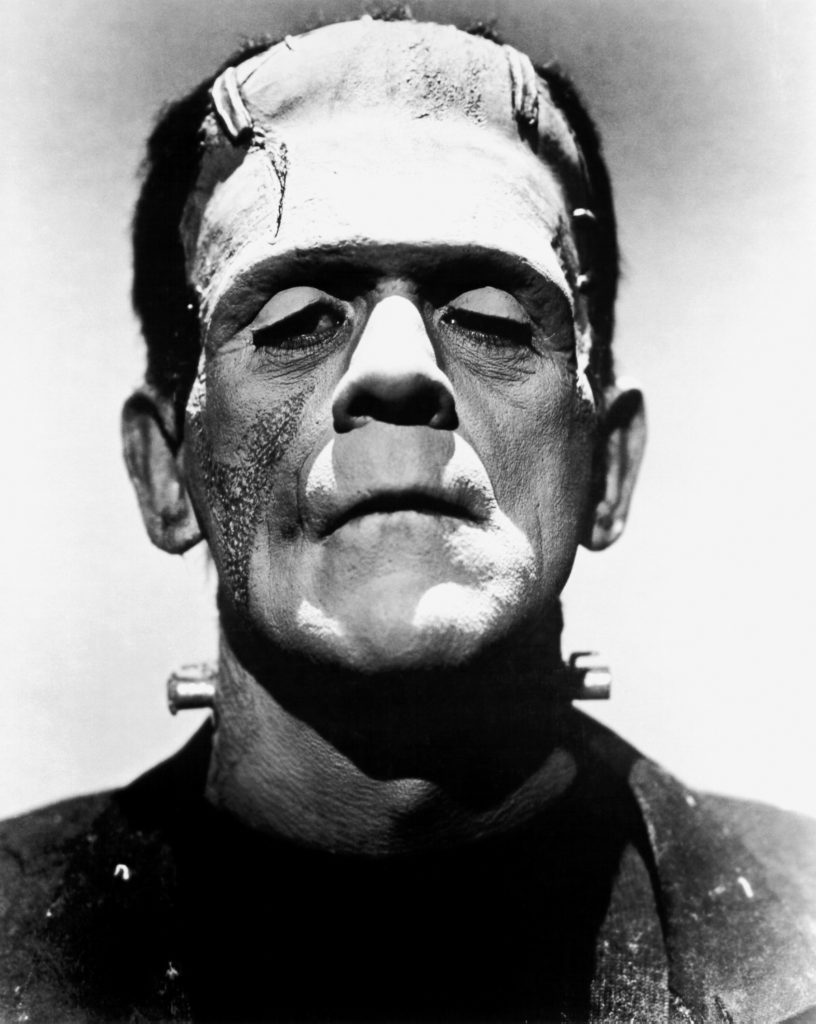
II. Clown Without Pity

Context: The title is a play on Town Without Pity, a now-forgotten 1961 courtroom film that inspired the much more familiar Gene Pitney song of the same name. The basic storyline of the segment seems to come from two sources: a 1963 episode of The Twilight Zone called “Living Doll”, where a father makes several fruitless attempts to destroy his little girl’s evil talking toy, and the final segment of Richard Matheson‘s 1975 portmanteau TV miniseries, Trilogy of Terror, where a possessed aboriginal idol comes alive and makes several vicious attacks on its owner (the segment is titled, “Amelia”). The basic idea of a murderous ‘living doll’, though, is as old as the “Ventriloquist’s Dummy” sequence from the 1945 British horror classic Dead of Night (the premise of which provided the basis for the 1978 horror film, Magic, starring Anthony Hopkins) and has since reappeared in the Chucky/Child’s Play movies. Finally, the sequence where Homer goes to an old antique store in Chinatown (to buy a birthday present for Bart) is taken from the 1984 horror comedy Gremlins, with the old shop-keeper character based on actor Keye Luke as Mr. Wing.
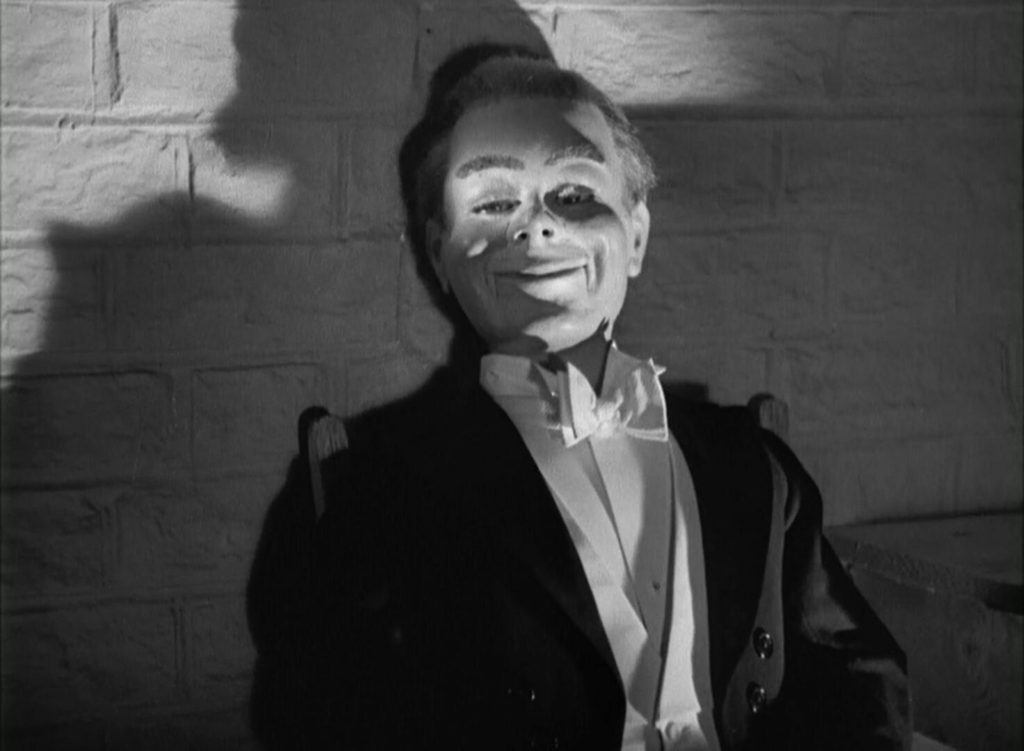
Dead of Night (1945)
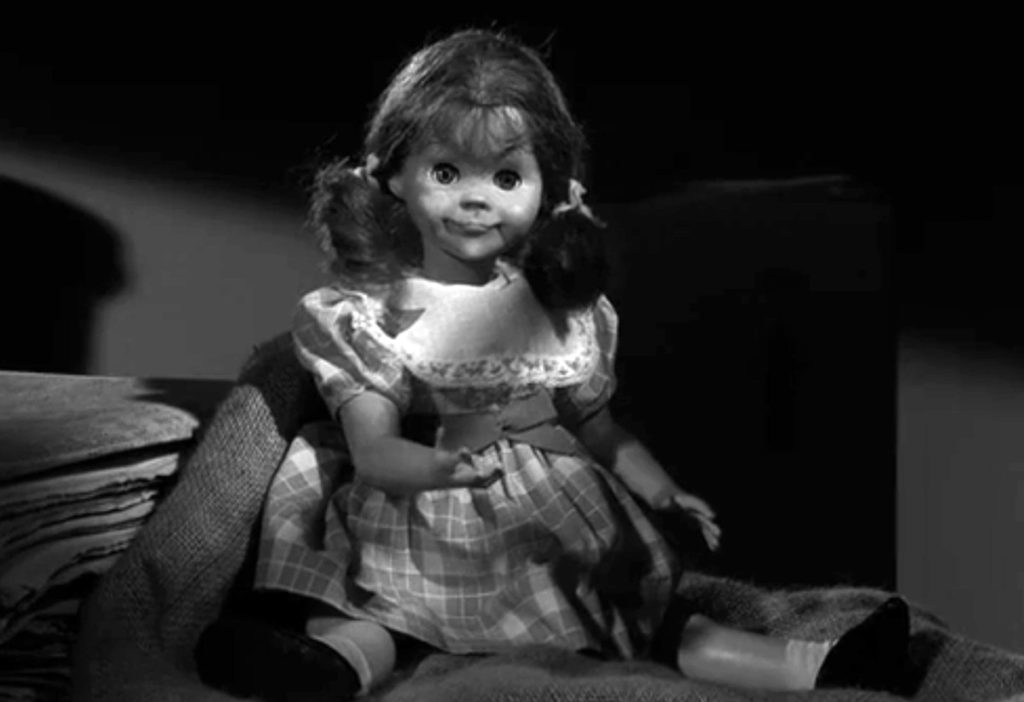
“Living Doll” (1963) on The Twilight Zone
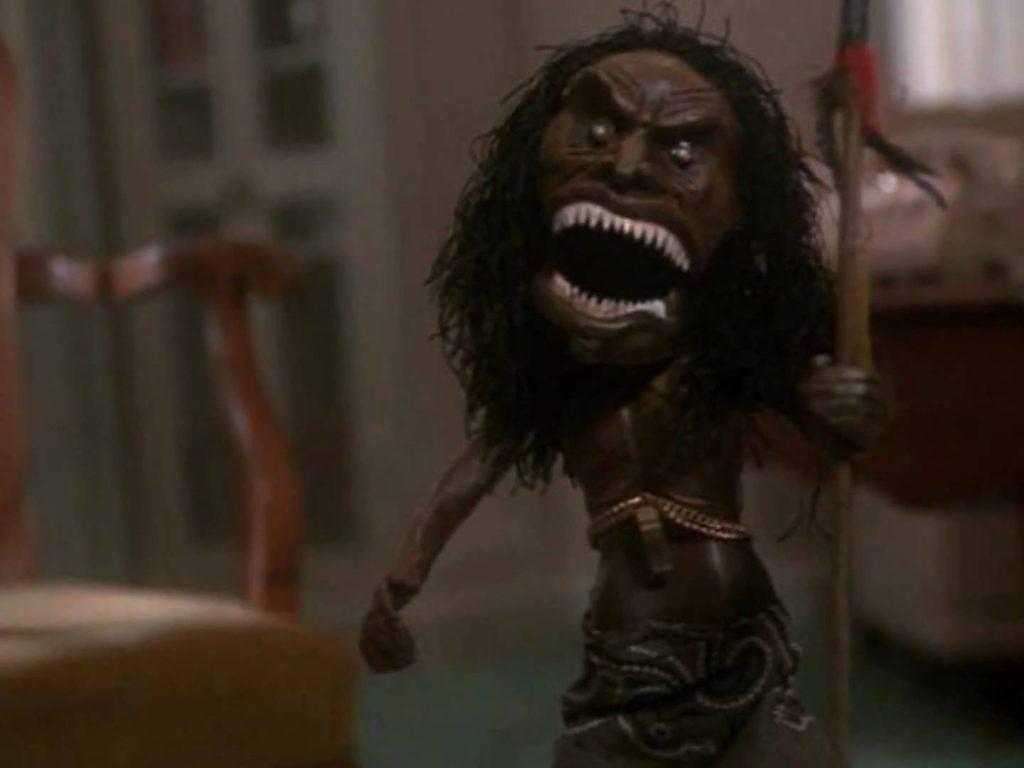
“Amelia” from Trilogy of Terror (1975)
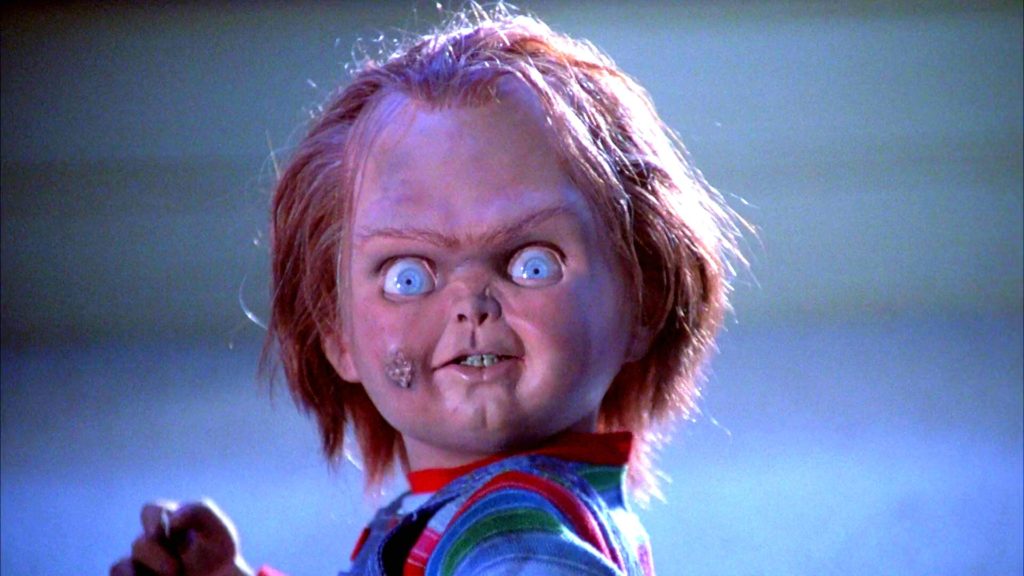
Chucky from Child’s Play (1988)
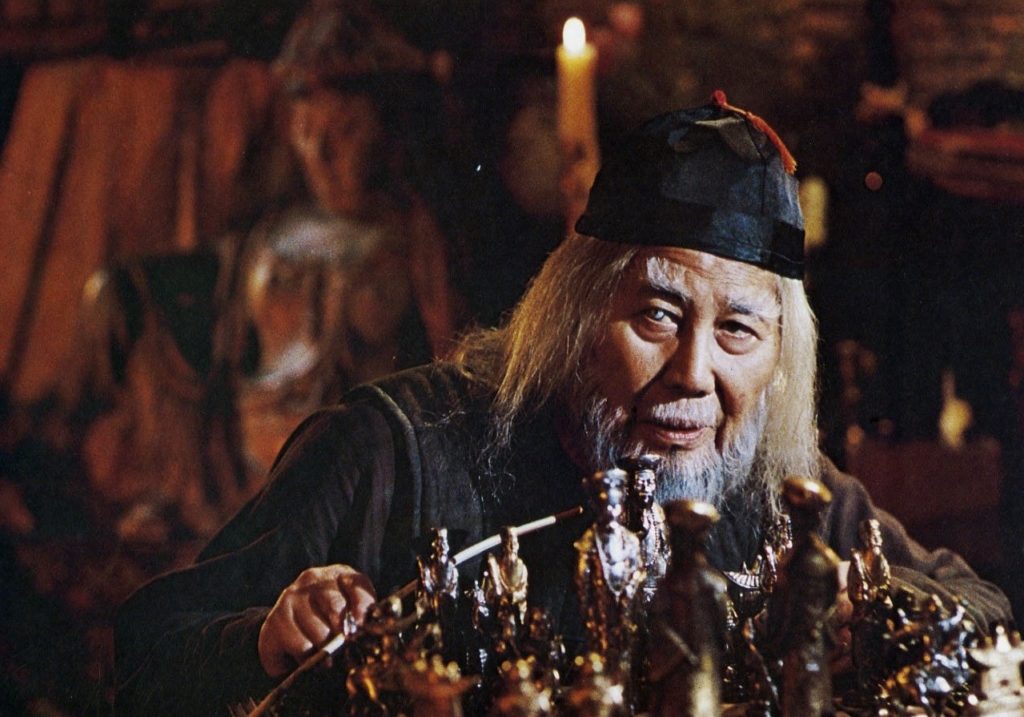
Keye Luke as Mr. Wing in Gremlins (1984)
3:19 – 4:00:

Mysterious objects on old Chinese shopkeeper’s shelves:
– The Monkey’s Paw from the previous Treehouse of Horror special. The Monkey’s Paw is an oft-adapted, oft-parodied 1902 horror short story by W.W. Jacobs concerning a cursed talisman — the paw of a dead monkey — that grants its owner 3 wishes…all of which end in misery for the person making the wishes.

– “The Tell-Tale Heart”: May be a stretch, but E.A. Poe‘s 1843 “tale of mystery and imagination” seems a likely reference for the live, beating heart seen on the shopkeeper’s shelf.
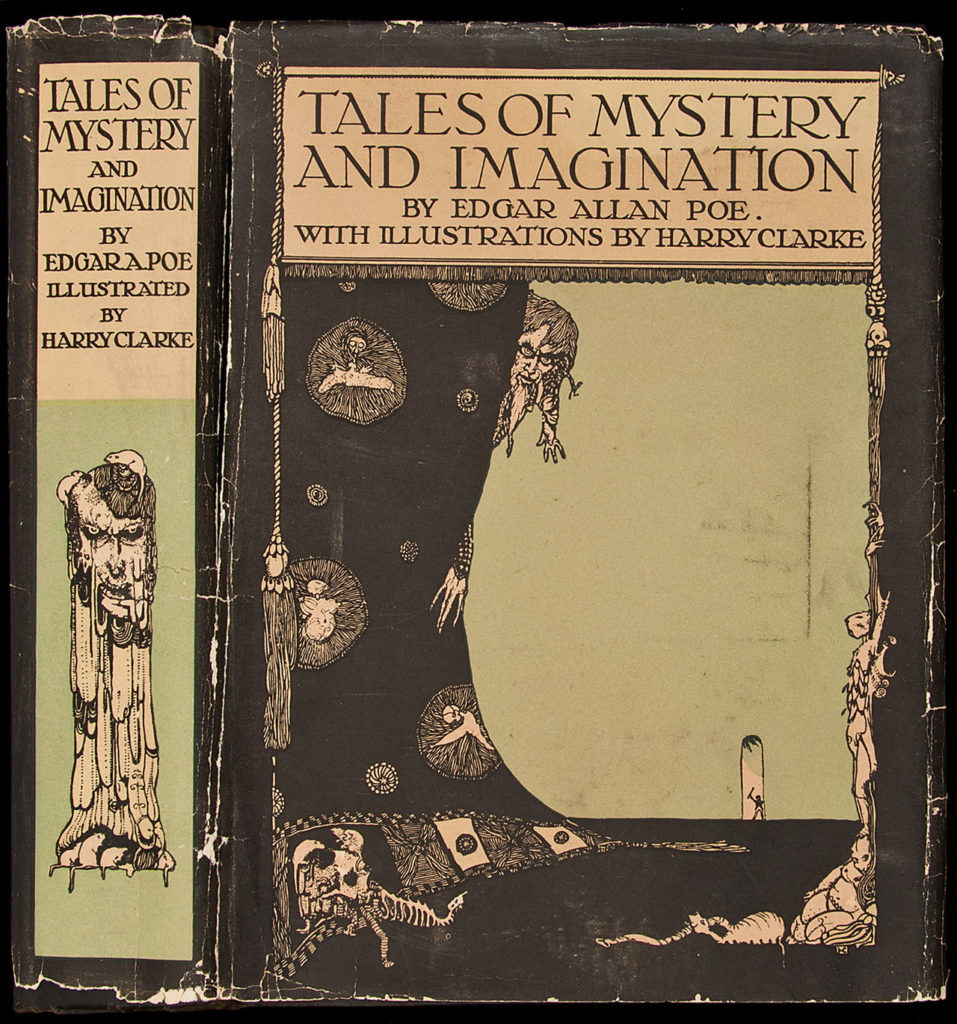
4:12:
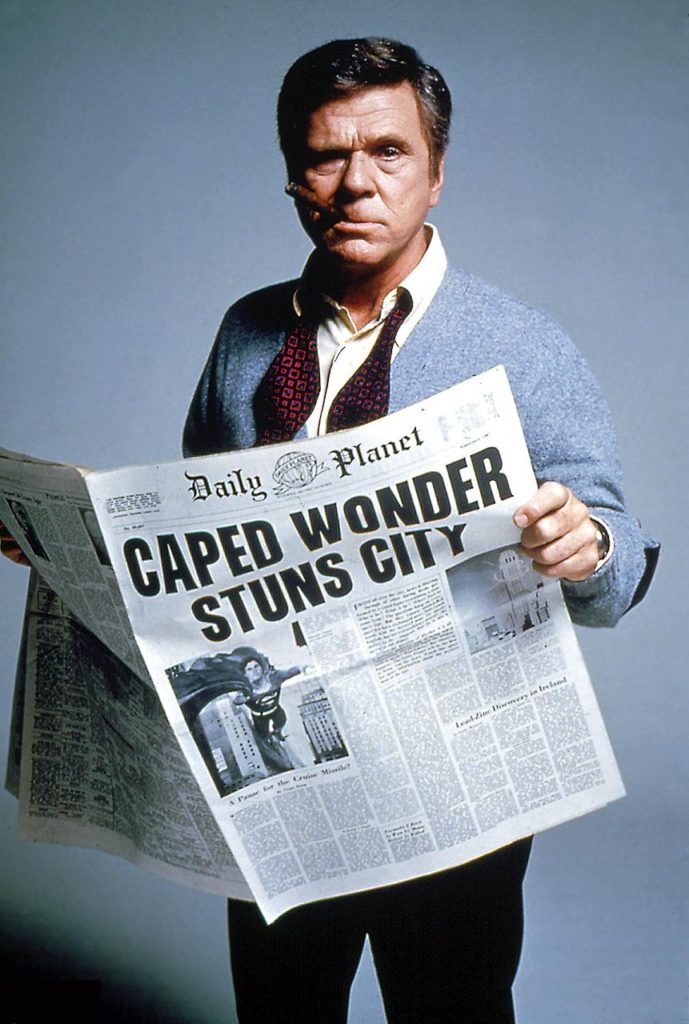
Jackie Cooper as Perry White in the 1978 movie Superman
Great Caesar’s Ghost!
– From the Superman comics: Bart employs Daily Planet editor Perry White‘s favored oath to express his delight upon unwrapping his father’s present and finding…a Krusty doll!
4:57 on:
I’m Krusty the Klown, and I don’t like you. I’m Krusty the Klown, and I’m going to kill you!

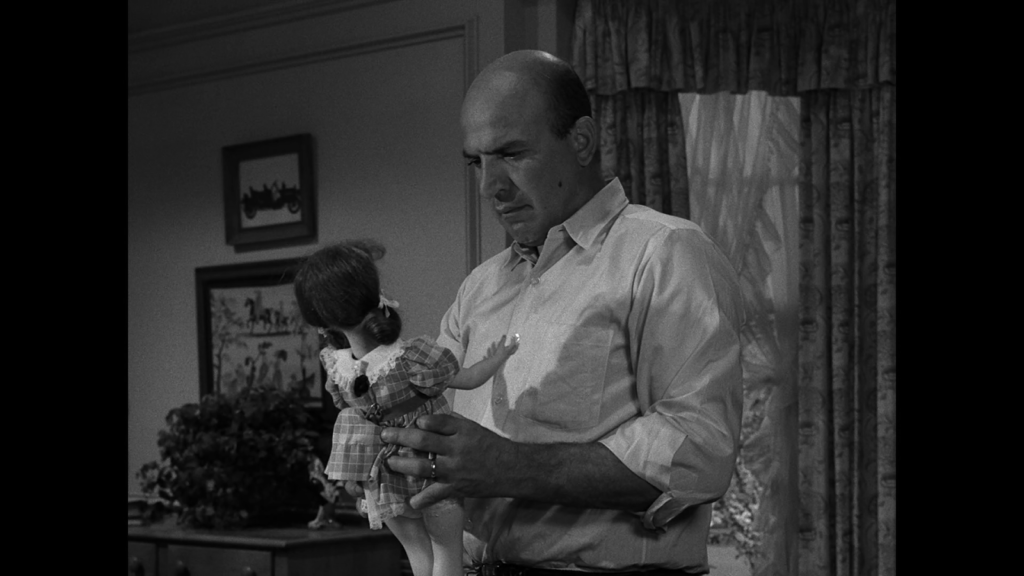
– Dialogue taken verbatim from the Twilight Zone episode, “Living Doll”, mentioned above — with “Krusty the Klown” inserted for “Talky Tina”.
5:02 on:

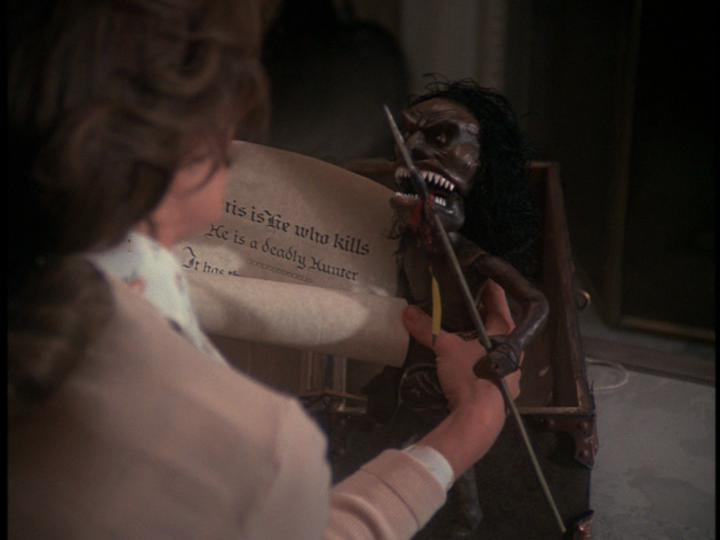
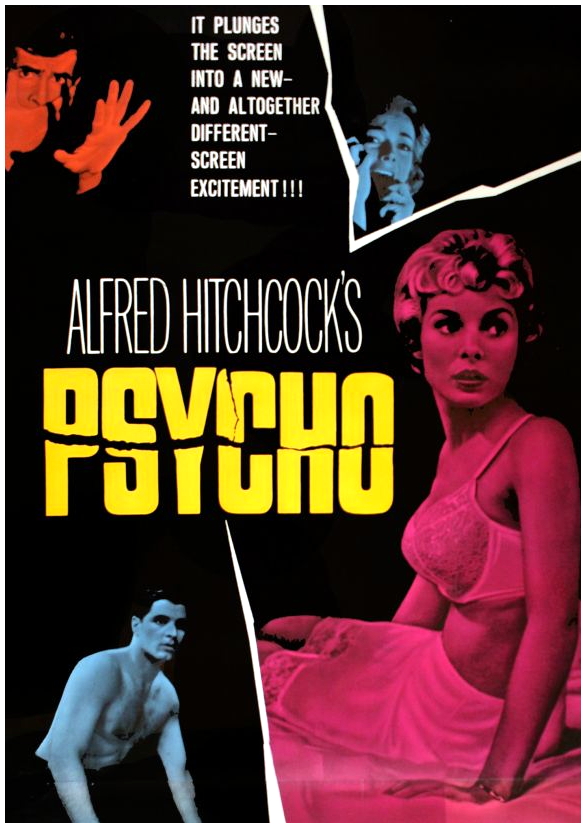
The visual cue of the Krusty doll brandishing a huge knife over the edge of the couch is from the Trilogy of Terror segment, “Amelia”, mentioned above. The 1960 Alfred Hitchock classic, Psycho, provides the accompanying ‘screeching violins’ from Bernard Herrmann‘s equally classic score.
5:30 on:

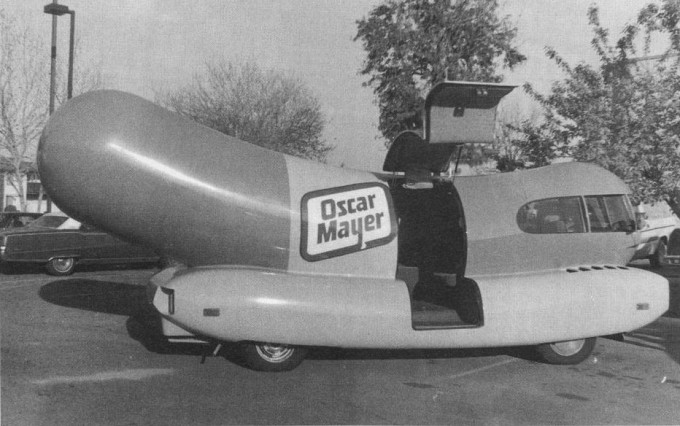
Homer sings the “Oscar Mayer Bologna Song” while taking a bath, inserting “H-O-M-E-R” for both “O-S-C-A-R” and “M-A-Y-E-R”. The “Oscar Mayer Bologna Song” should not be confused with the equally well-known, though ungrammatically subjunctive, jingle, “I Wish I Was An Oscar Mayer Wiener”.
Trust me on this. I’m from the brand and wiener’s place of both origin and manufacture: Madison, Wisconsin. (UPDATE 10/2016: But, regarding the latter, not for long.)
5:45:

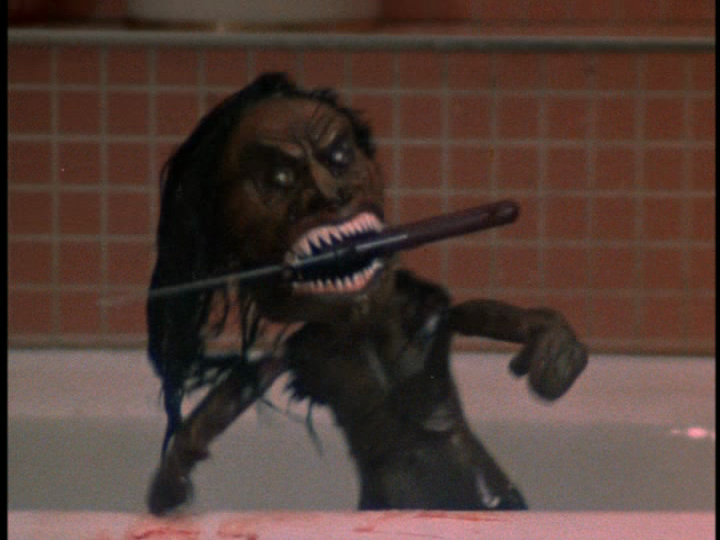
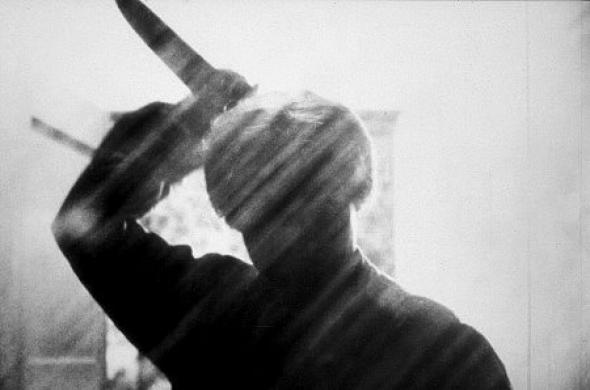
The Krusty doll springing up out of the bath to ‘harpoon’ Homer — accompanied, again, by Bernard Hermann‘s screeching violins — is again taken from the Trilogy of Terror segment, “Amelia”.
5:54:
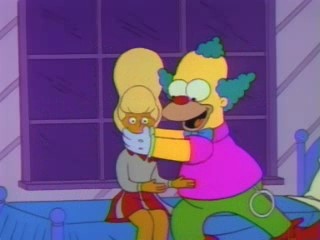

The Krusty doll tries to put the moves on an unresponsive Cheerleader Malibu Stacey (Simpsons version of a Barbie doll).
roundabout 6:00:

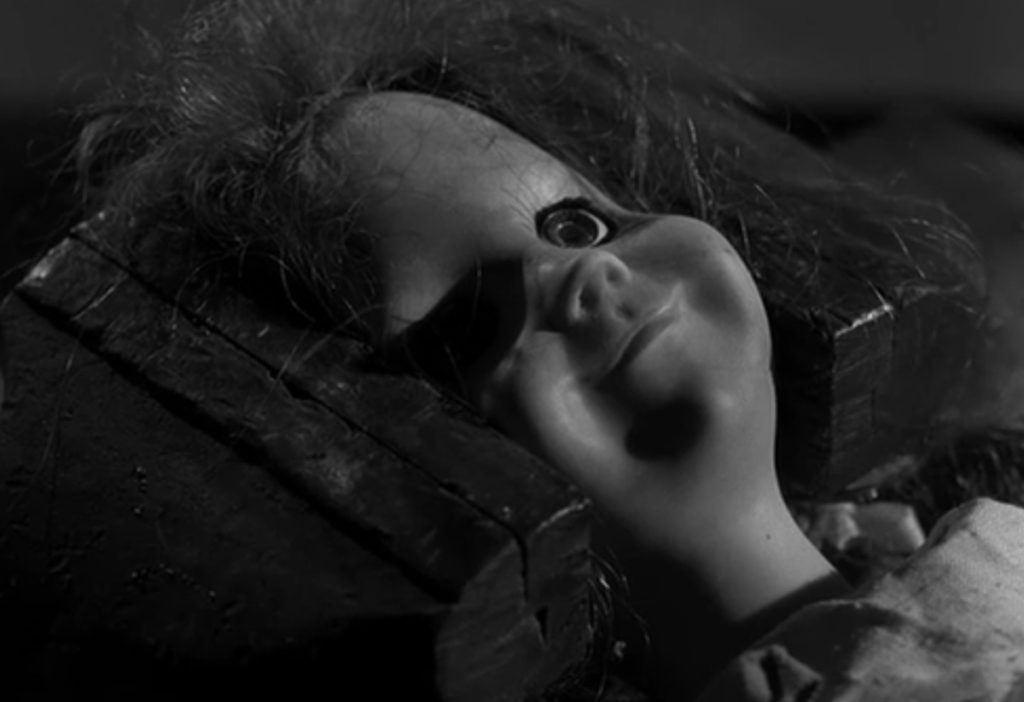
Didn’t time this one, sorry, but Homer locking the Krusty doll in a sack and tying a cord tightly ’round the sack is identical to a sequence in “Living Doll”, where the owner attempts, fruitlessly, to destroy the unstoppable evil doll.
6:30:
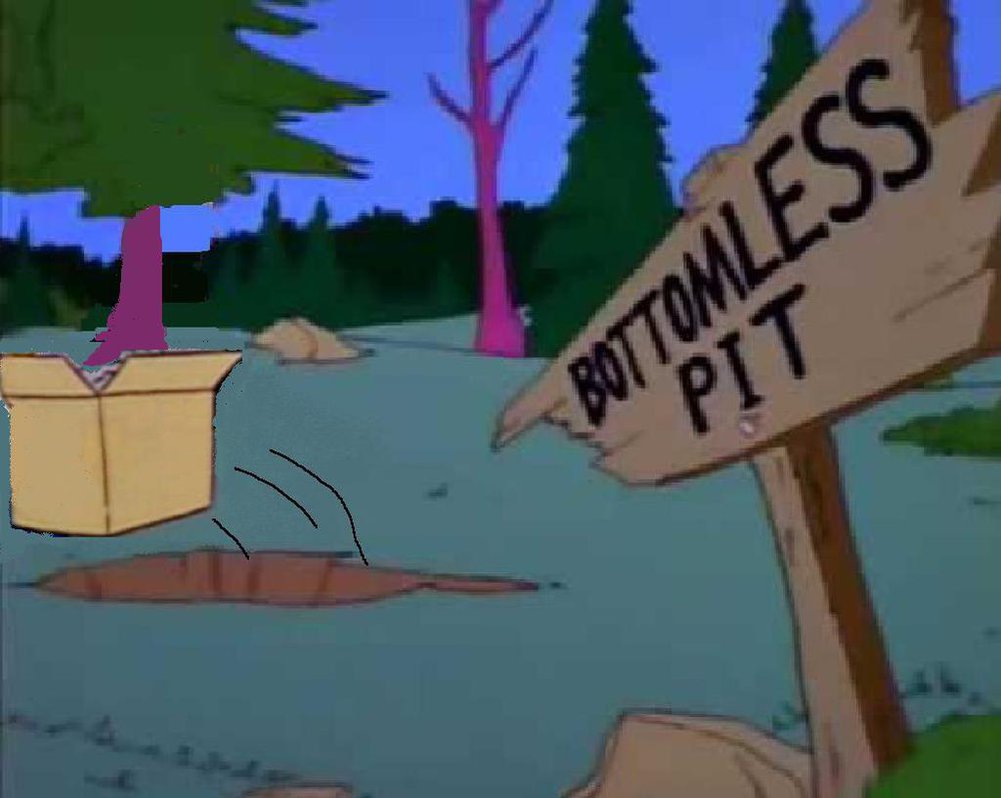
Whoopi Goldberg nude photos
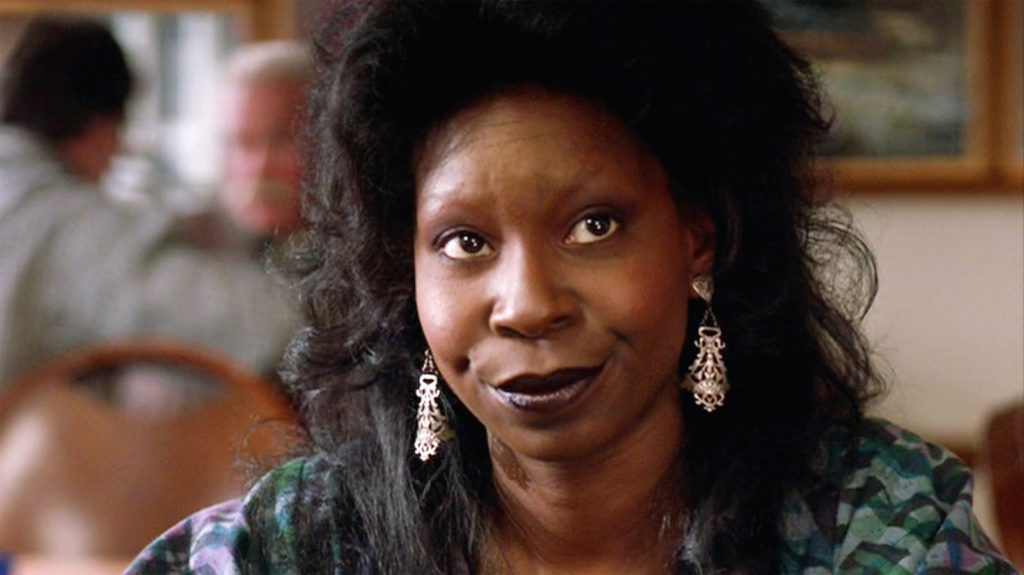
– Just the name “Whoopi Goldberg” reveals the sort of early 90s ‘topical’ humor that The Simpsons should have avoided in droves…dates the show terribly.
6:37:
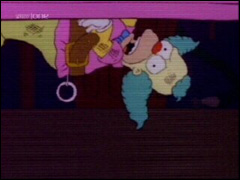
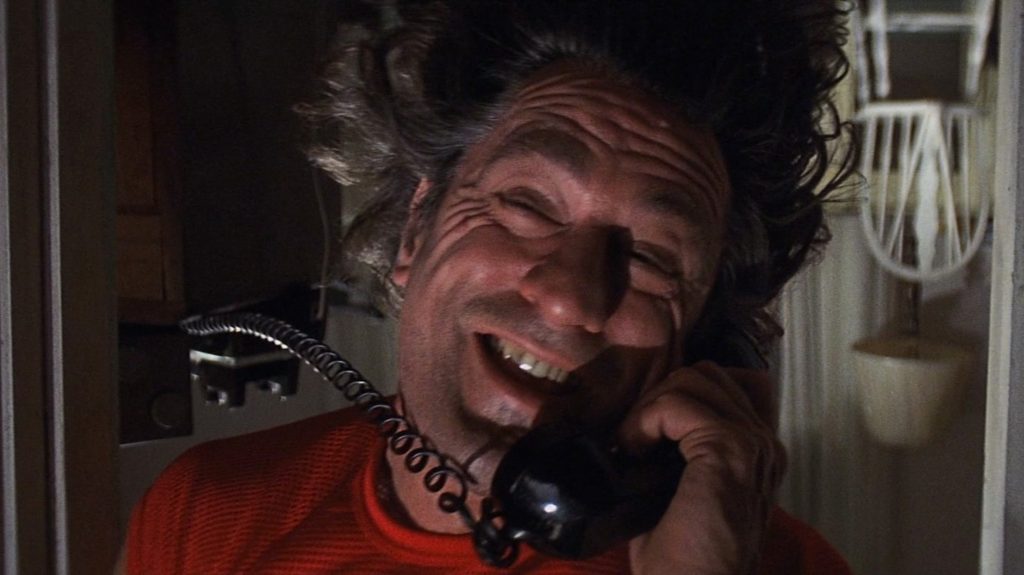
The Krusty doll makes his way out of the Bottomless Pit, strapping himself beneath Homer’s car. This implausible feat appears in the 1991 Martin Scorsese remake of the 1962 film Cape Fear, where Robert DeNiro‘s character belts himself to the bottom of Nick Nolte‘s car in order to stalk Nick Nolte‘s family to the title location. (The Simpsons would go on to parody the 1991 Cape Fear more extensively in the 1993 Sideshow Bob episode “Cape Feare”.)
6:42:
Guess who, fat boy!


– Another stretcher, but there’s a scene in 1988’s Beetlejuice where Michael Keaton, as Betelgeuse, jumps on the ample back of rotund interior decorator, Otho (played by the, as of 2010, recently diseased *ahem* deceased Glenn Shadix), and gleefully snarls: “Not so fast, round boy!” Set-up and camera angle from the film seem almost identical to the manner in which the Krusty doll jumps on Homer’s back and delivers the heading line.
7:05 on:
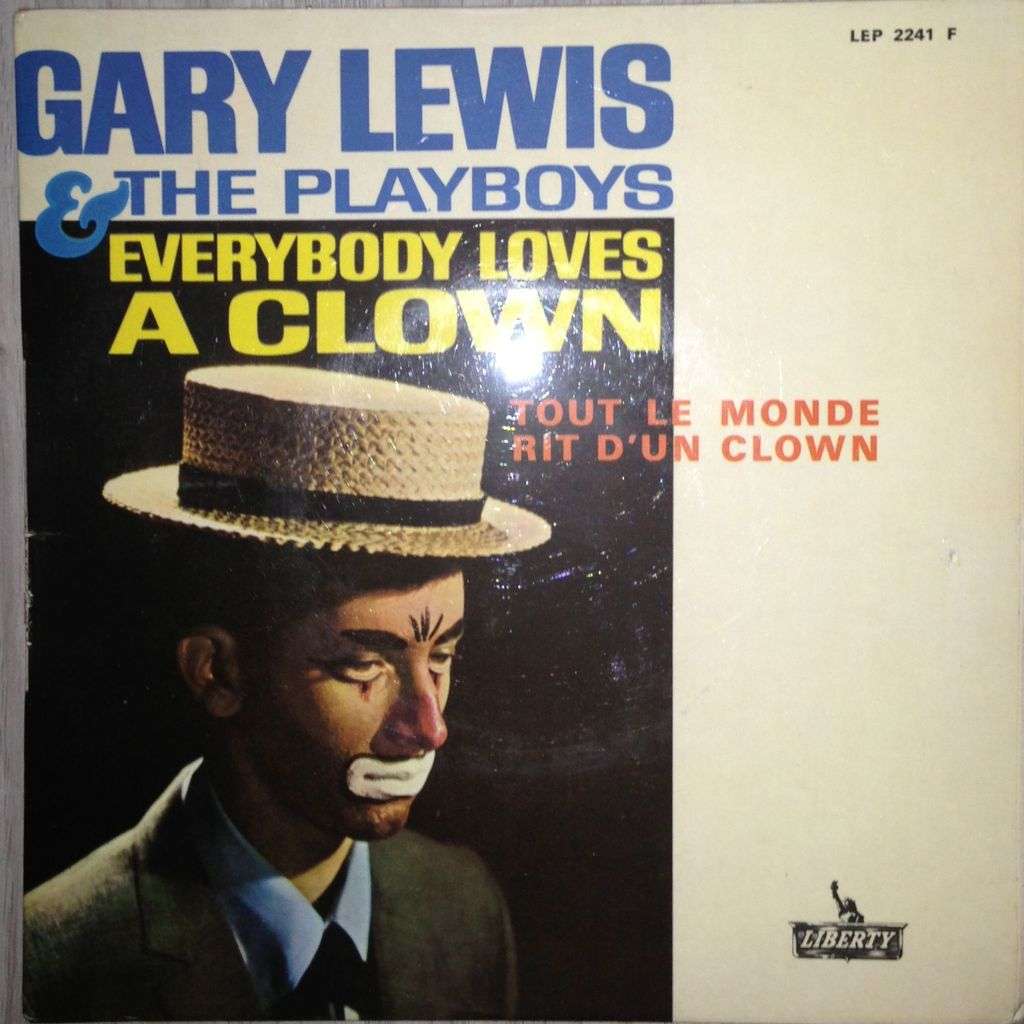
Marge calls up the KrustyKorp Hotline and is put on hold. The on-hold music is the 1965 hit ditty “Everybody Loves a Clown (So Why Don’t You?)” by Gary (son of Jerry) Lewis of Gary Lewis & the Playboys.
7:52 on:
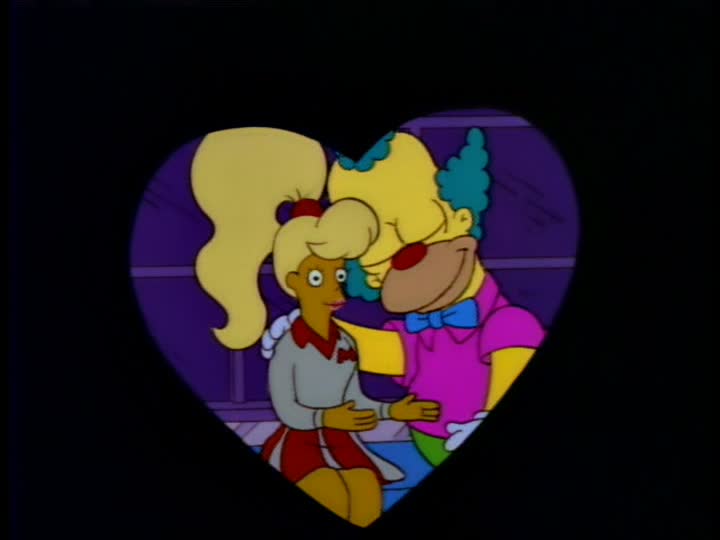
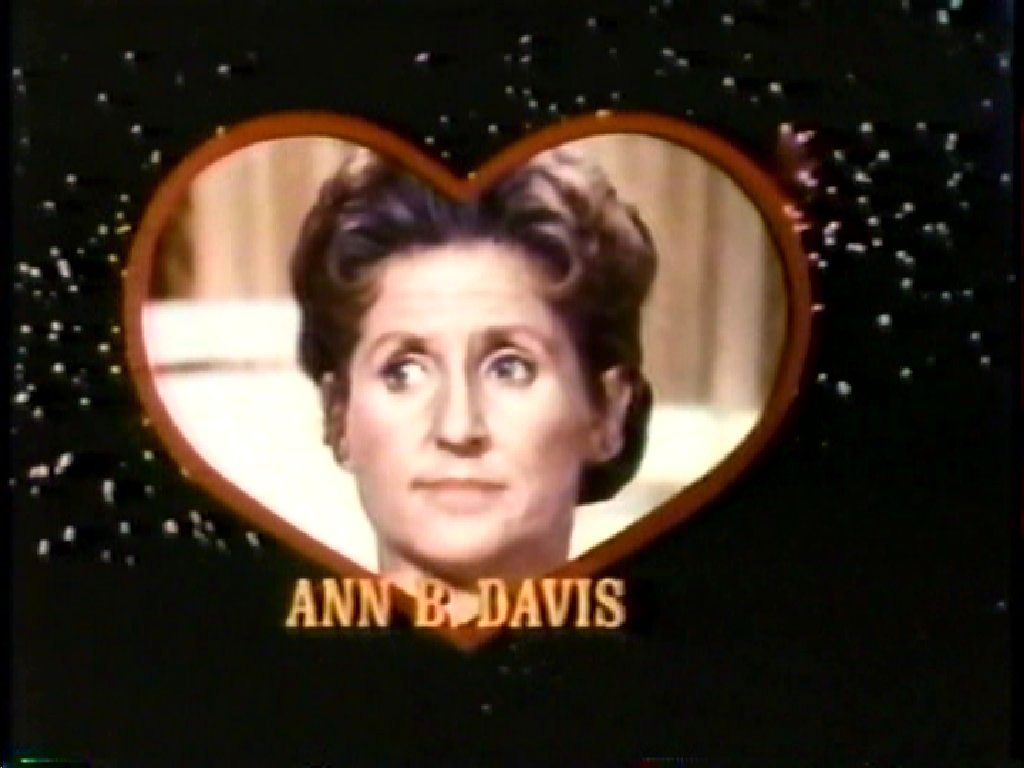
The episode irises out with a heart shape and cheesy musical cue. Both cues are from the 1969-1974 TV anthology show, Love, American Style — which is perhaps best remembered today for airing the 1971 episode, “New Family in Town”. ABC later bought this episode as a pilot and the show was retitled Happy Days.
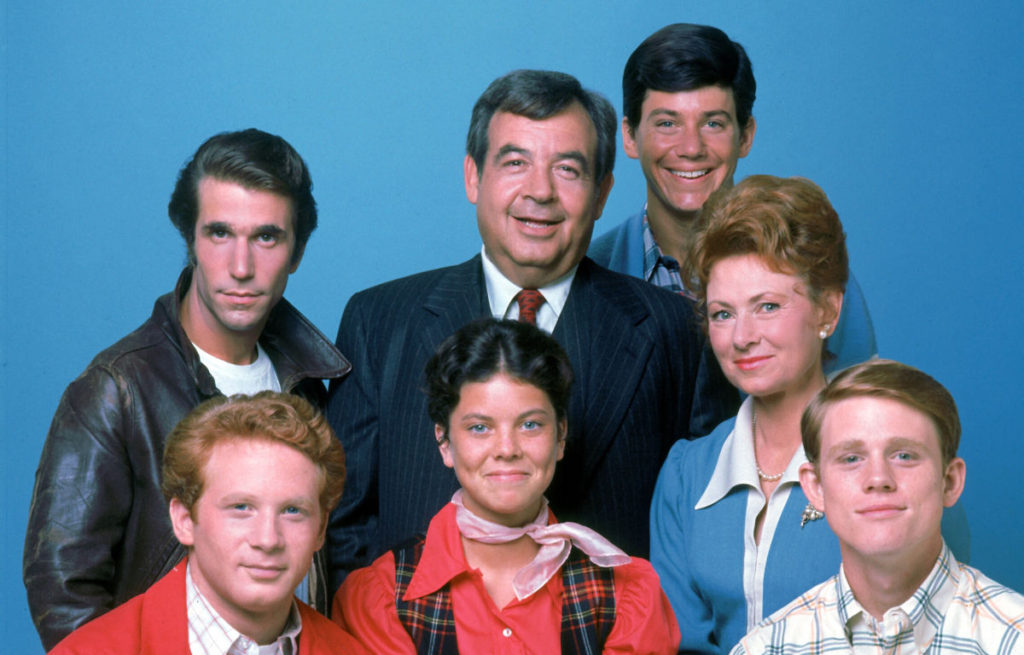
III. King Homer
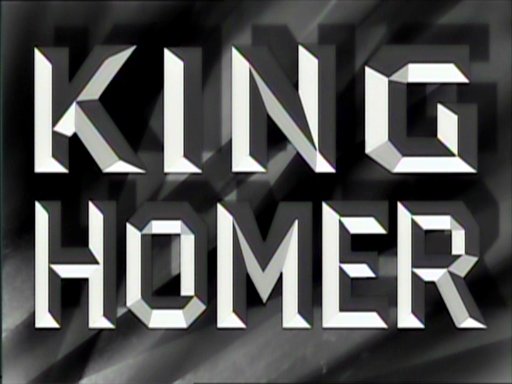
Context: Okay…the big white elephant in the room — or rather the 18-foot Ape — is Kong himself. King Kong, an RKO production that premiered on March 2, 1933, is one of those rare films — like Snow White and the Seven Dwarfs and The Wizard of Oz after it – that, through near-continuous revivals and/or remakes, managed to permeate the culture so deeply that it’s now practically part of, or even draws on, the collective unconscious. Even if you’ve never actually sat down and watched the movie, you’re probably familiar with the character and basic sweep of the story, anyway. So I’m not gonna belabor every reference and plot point connected to Kong here, but rather focus on stuff you maybe didn’t know.
More for myself than anyone else, I will provide a cast list, though:
Marge Bouvier
– Based on the Fay Wray character: screaming ingénue Ann Darrow.


Mr. Burns
– The Robert Armstrong role: ethnographic documentary filmmaker, Carl Denham.
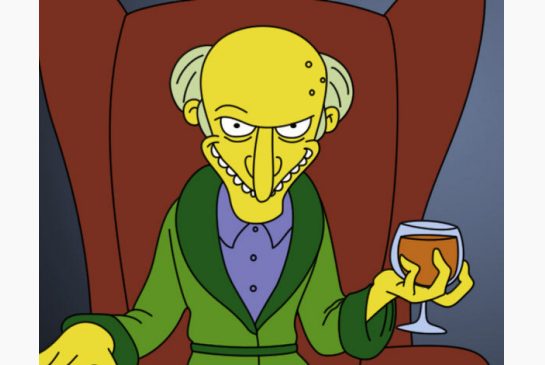

Smithers
– An unsuitably non-romantic stand-in for virile Bruce Cabot: SS Venture first mate John ‘Jack’ Driscoll.
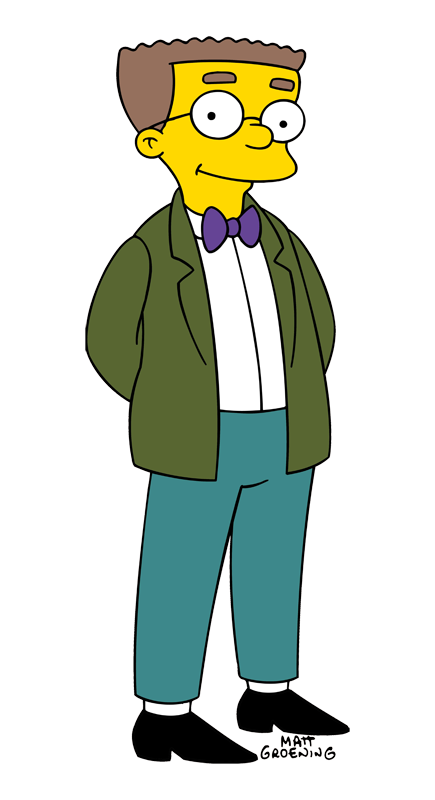
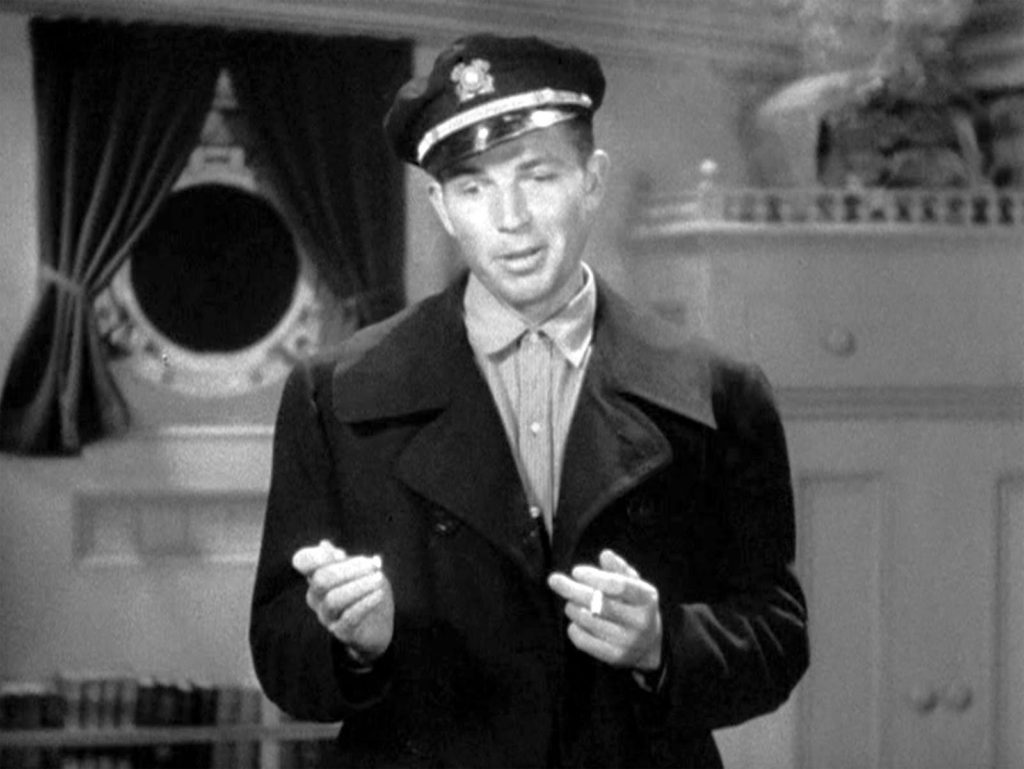
King Homer
– Who else?

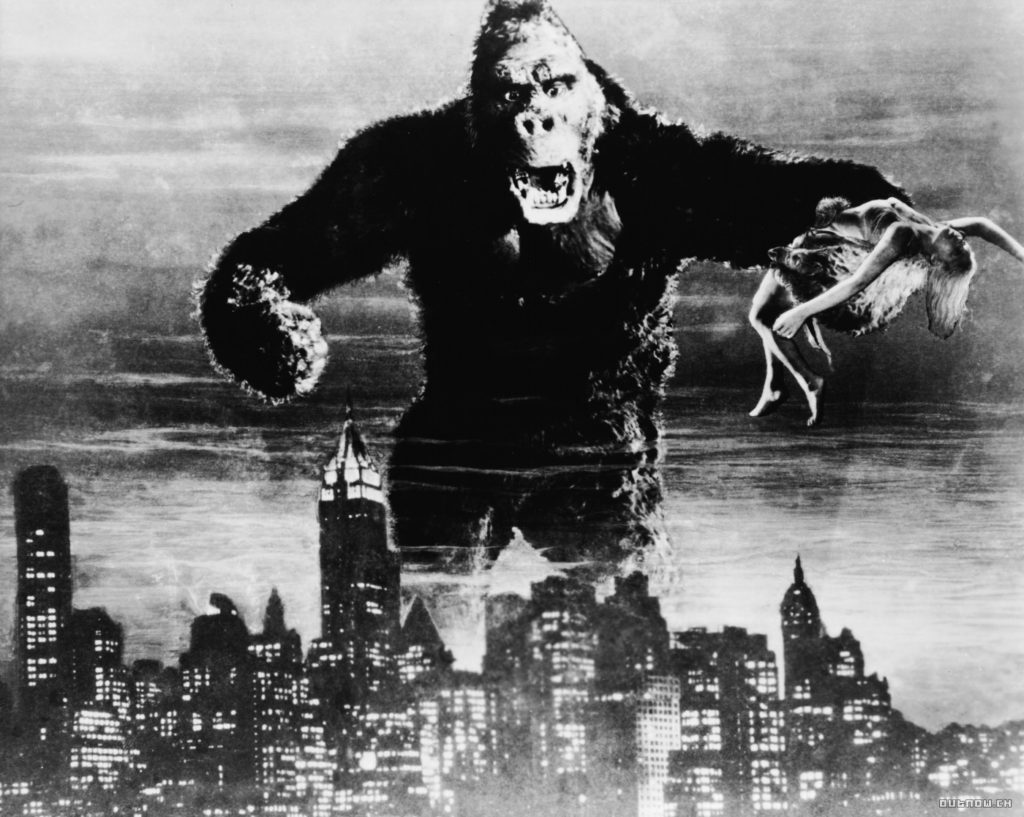
Finally, the victims of King Homer’s monstrous appetite include island natives, sailors, reporters, Broadway performers, and city pedestrians.
Okay, then…
opening to 8:57:
Women and seaman don’t mix.
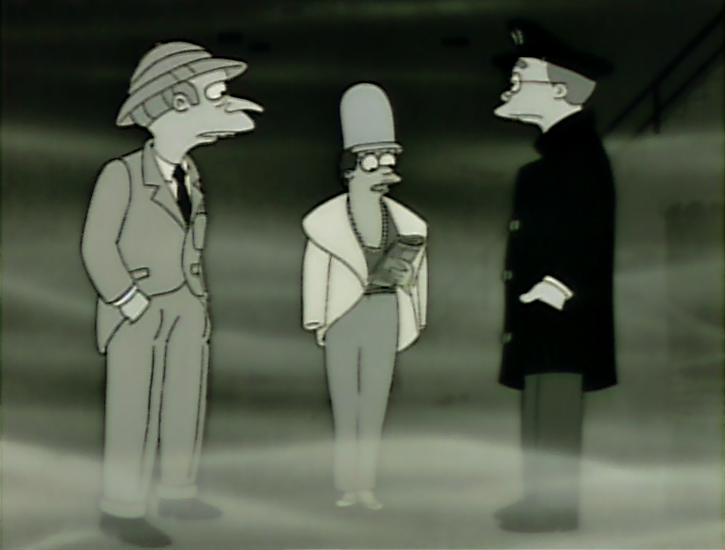
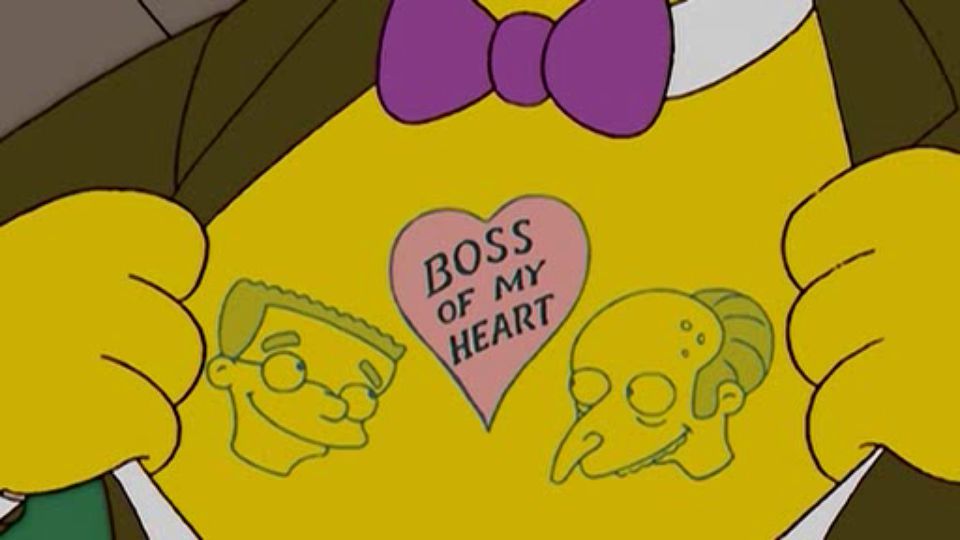
– As delivered by Smithers, in characteristically subtextual terms, probably the dirtiest joke/pun from The Simpsons early seasons. I only mention it ’cause I showed this segment to a group of Korean middle schoolers and worried how the Korean subtitles on the Region 3 DVD might translate. Fortunately, they didn’t even try: in Korean, it simply reads “Women and sailors don’t mix”. Which was a relief.
Also, I wanted to leave a space here to mention the beautiful rendering of the original’s black and white photography by The Simpsons artists/animators. It’s especially nice in this waterfront scene — what with the smoky haze and the tall ships in the background. Very atmospheric.
9:28 on:
…a tourist trap concocted by the Ape Island Jaycees.
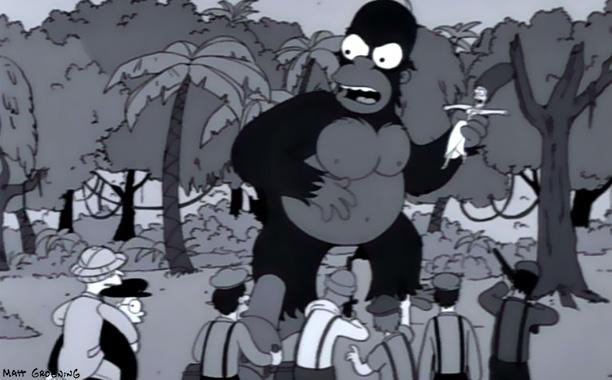
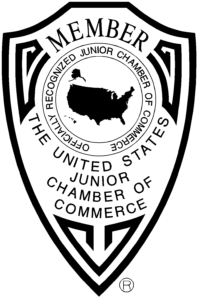
– Jaycees or United States Junior Chamber: An American not-for-profit young adult organization — stressing leadership and civic duty — founded in 1920. Former Jaycees of note include former U.S. Presidents Richard Nixon, Gerald Ford, Ronald Reagan, and Bill Clinton. Infamous serial murderer John Wayne Gacy was also a former Jaycee.

John Wayne Gacy (1942 – 1994): Everybody loves a clown?
9:38 on:
Mr. Burns covers a slip of the tongue, where he referred to Marge as “the bait”, by quickly modifying the word to Bathing Beauty.

The Sennett Bathing Beauties were a series of short films produced by Mack Sennett during the late teens and early twenties featuring attractive young women cavorting about in (then-)skimpy beach attire. Bathing Beauties of note included Gloria Swanson, Mabel Normand, and Marie Prevost — all of whom purveyed these early career ‘exposures’ to later wealth and stardom.
Sennett-fans, given the pioneering slapstick producer’s equally pioneering acumen with Southern Californian real estate, forget Charlie Chaplin, Roscoe “Fatty” Arbuckle, Ford Sterling, Billy Bevan, Raymond Griffith, and The Keystone Kops. Wanna guess what really paid for the iconic HOLLYWOODLAND sign?: Why, The Bathing Beauties, of course!
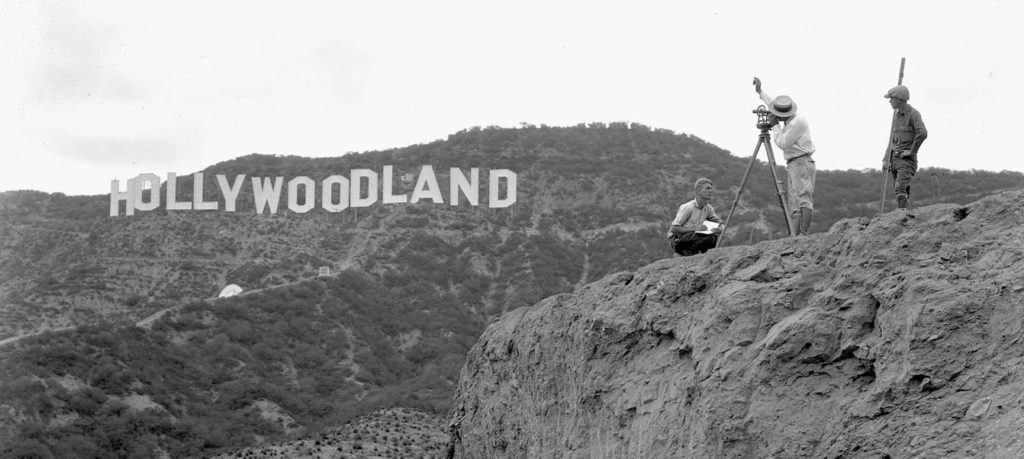
9:56 on:
Mosi Tatupu! Mosi Tatupu!

– Or, translated from the language of the Ape Island Natives, “The blue-haired woman will make a good sacrifice“. Mosi Tatupu, a native of Samoa, was an NFL running back who played for the New England Patriots and the Los Angeles Rams. He recently passed away, in 2010, at the age of 54.
10:28 (repeated at 11:20):
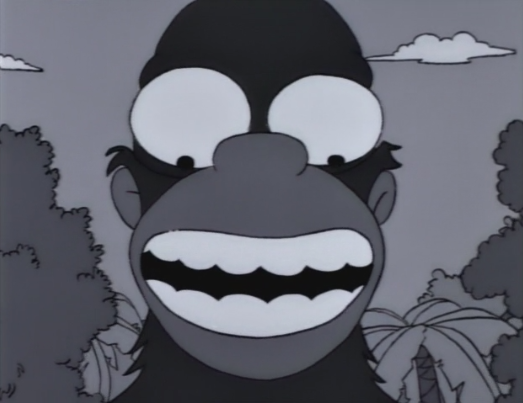
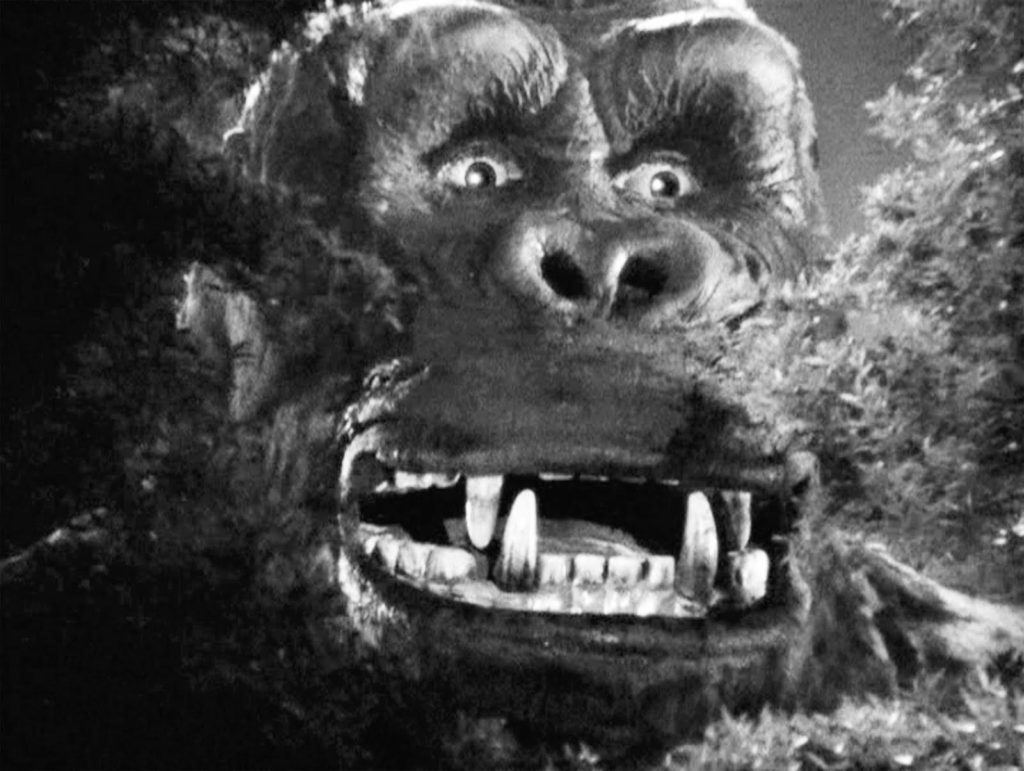
Giant close-up of King Homer’s head, camera slowly tracking-in: Special effects on King Kong came under the supervision of stop-motion animator Willis O’Brien and sculptor/designer Marcel Delgado. The full-length shots of Kong are famously of miniature puppets of varying size and scale, manipulated by stop-motion technique. For closer views of Kong, Delgado and his team built a giant bust of the ape’s head out of wood and rubber, which they wrapped in cloth and bear skin for, one presumes, verisimilitude. The monstrous head contained levers, hinges, and an air compressor by which three smaller-size men — sitting directly within the head — manipulated the mouth and facial expressions.
So that’s what constituted a close-up in the original King Kong.
11:22 on:
I was strolling through the gas one day…
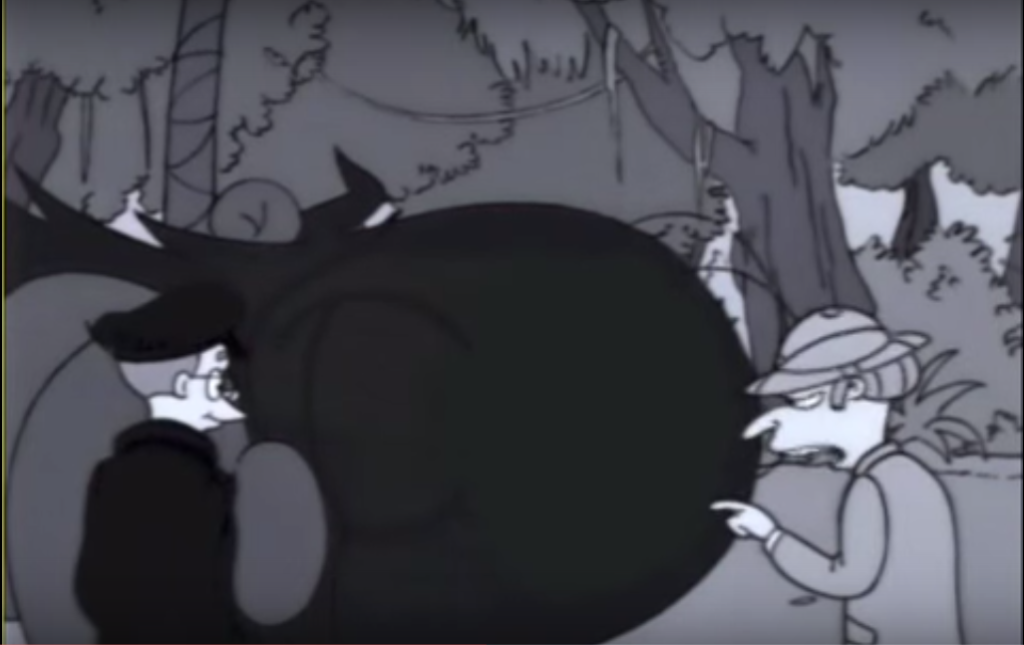
– Burns breaks out the gas bombs and accidentally gases himself with a short-distance girly throw. In his delirium, the lyric he sings is from the 1884 Ed Haley song, “The Fountain in the Park“, with “through the gas” inserted for “in the park” (though the original lyric actually started “While strolling” rather than “I was strolling“).
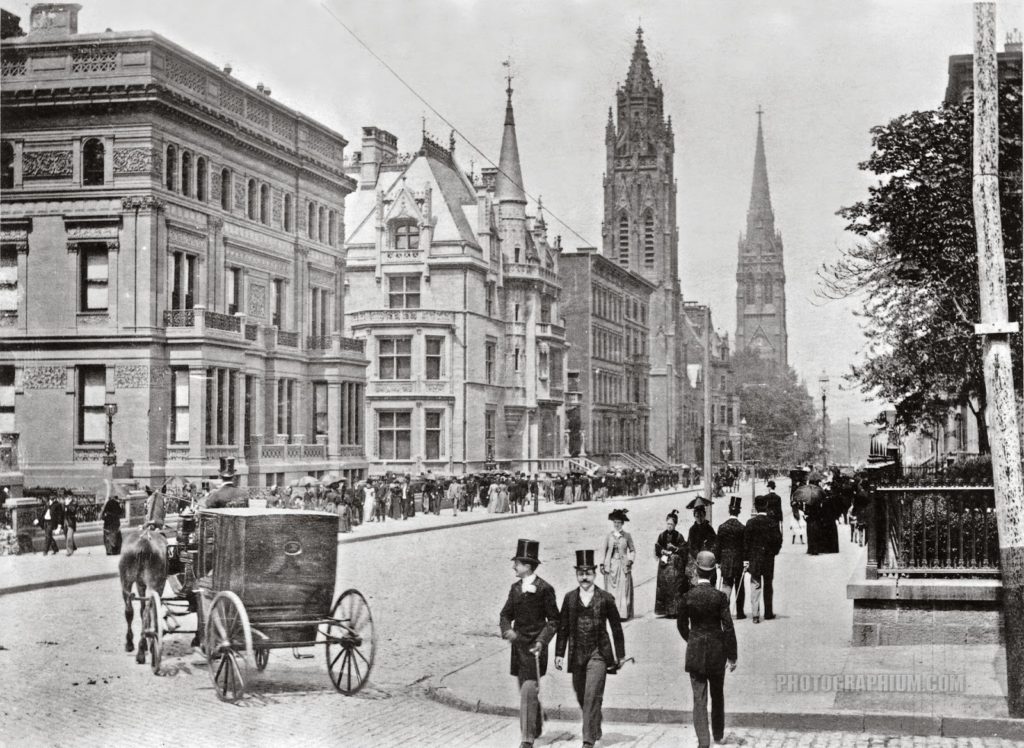
Quite appropriate for his character that Burns should think of a song (then-)50 years out of date.
11:46:
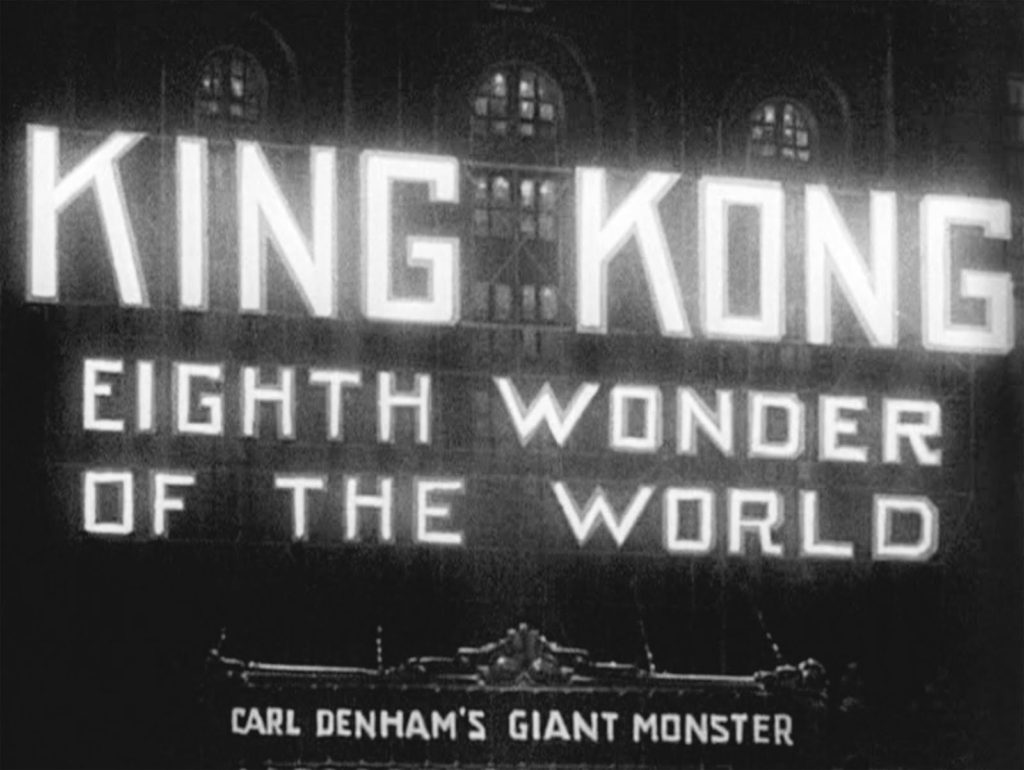
Giant Broadway sign reading “King Homer: Eighth Wonder of the World“: A direct copy of the sign (and shot) from the original film, it’s also worth noting that the title of a first script treatment for King Kong was Eighth Wonder.
12:08:
Then we’ll close with the ethnic comedy of Dugan and Dershowitz.
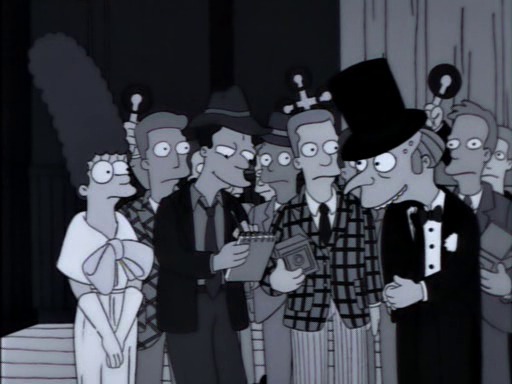
– Minstrel blackface routines were still commonplace in popular entertainment of the 1930s, but it’s worth (further) noting that the concurrent popularity of The Marx Brothers, The Three Stooges, and Jack Benny — following on success achieved by Eddie Cantor, Fanny Brice, and Al Jolson — showed Jewish comedians and entertainers emerging firmly into the mainstream.
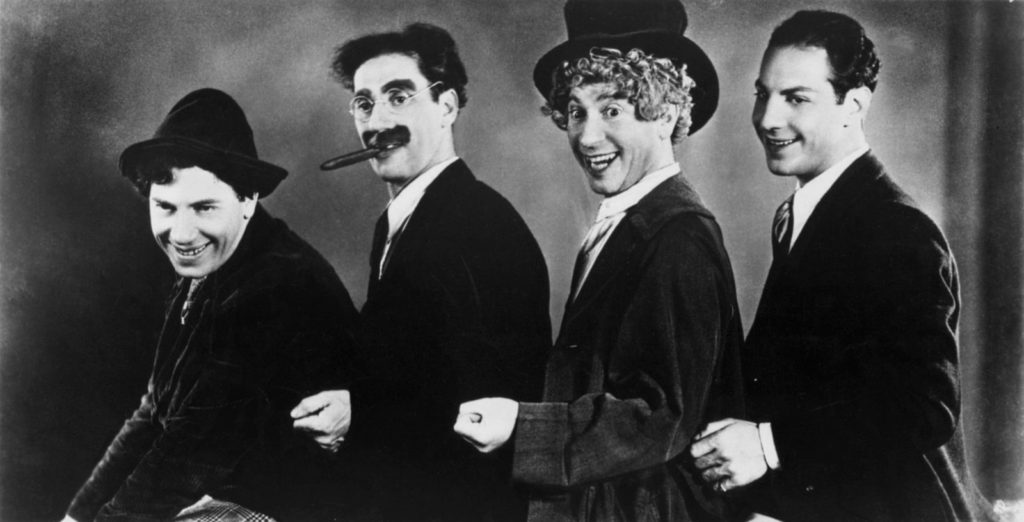
Chico! Groucho! Harpo! Zeppo! (eternally not pictured: Gummo!)
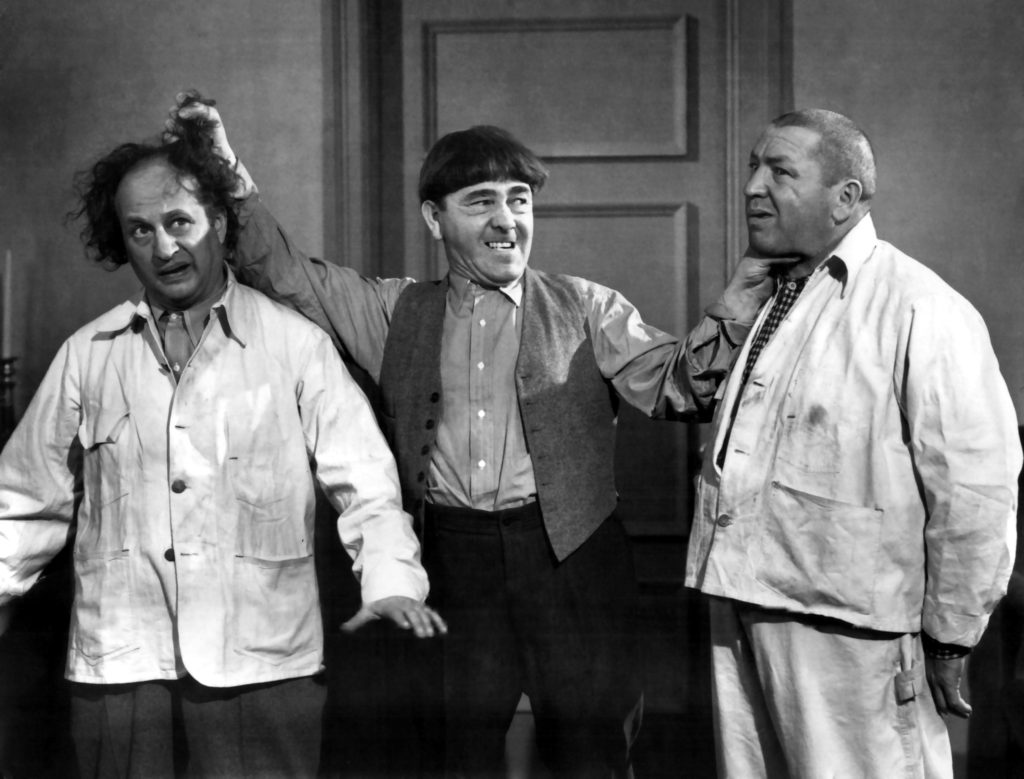
Nyuck, Nyuck-er, Nyuck-est

star of radio, movies, television, and stage — the eternally “39”-year-old Jack Benny
Mostly because many people weren’t aware they were Jewish, I suppose. But still…
13:00, maybe:
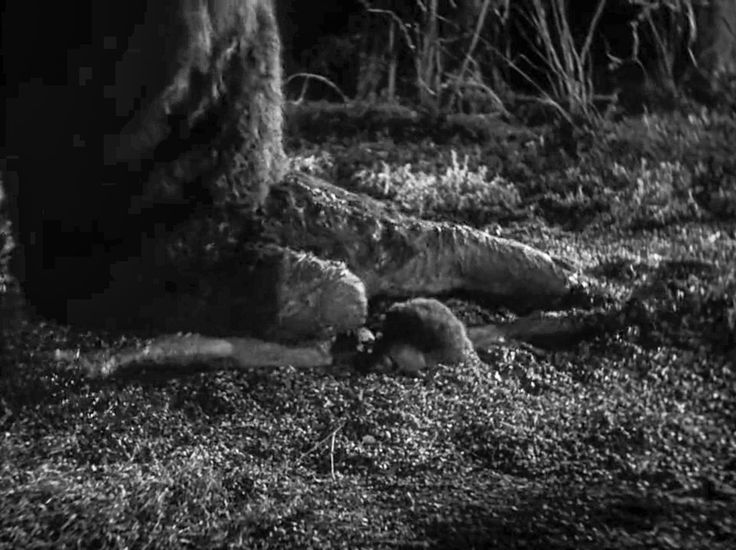
One of many fatal King Homer stomps, this time on a screaming reporter: Just wanted to point out, again, that close-ups of hands and feet were also achieved by filming huge models. Delgado and his team created a giant ‘stomping foot’ — made from steel and rubber and wrapped in bear skin — for closer shots of Kong’s preferred method of dispatch.
One imagines something along the lines of the giant foot smash that, 40 years later, would open each episode of Monty Python’s Flying Circus.
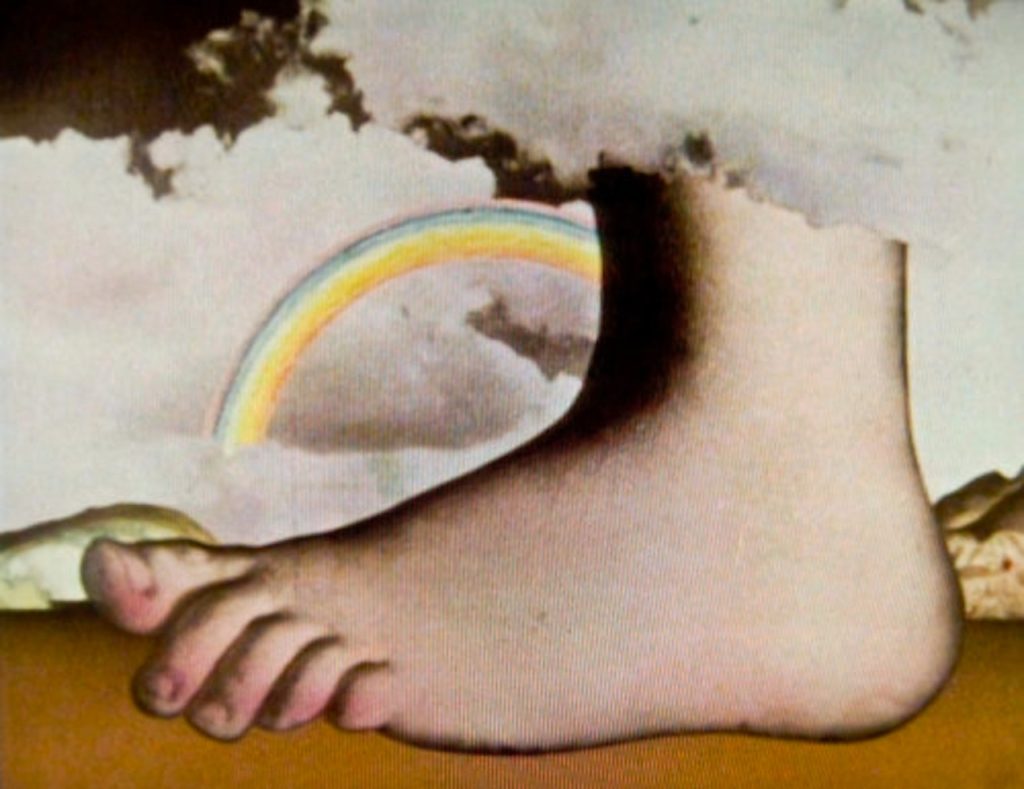
13:11 – 13:23:
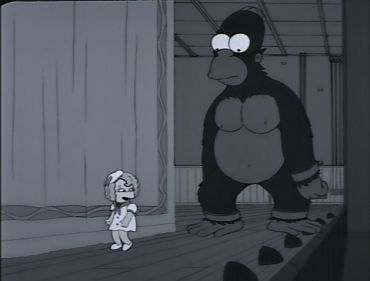
King Homer bursts through the wall of an adjacent theater, where child actress Shirley Temple is performing “On the Good Ship Lollipop”. King Homer seems to enjoy the song, but eats her anyway. “On the Good Ship Lollipop”, by Richard A. Whiting and Sidney Clare, was Temple‘s signature tune, which she originally sang in her 1934 movie, Bright Eyes.
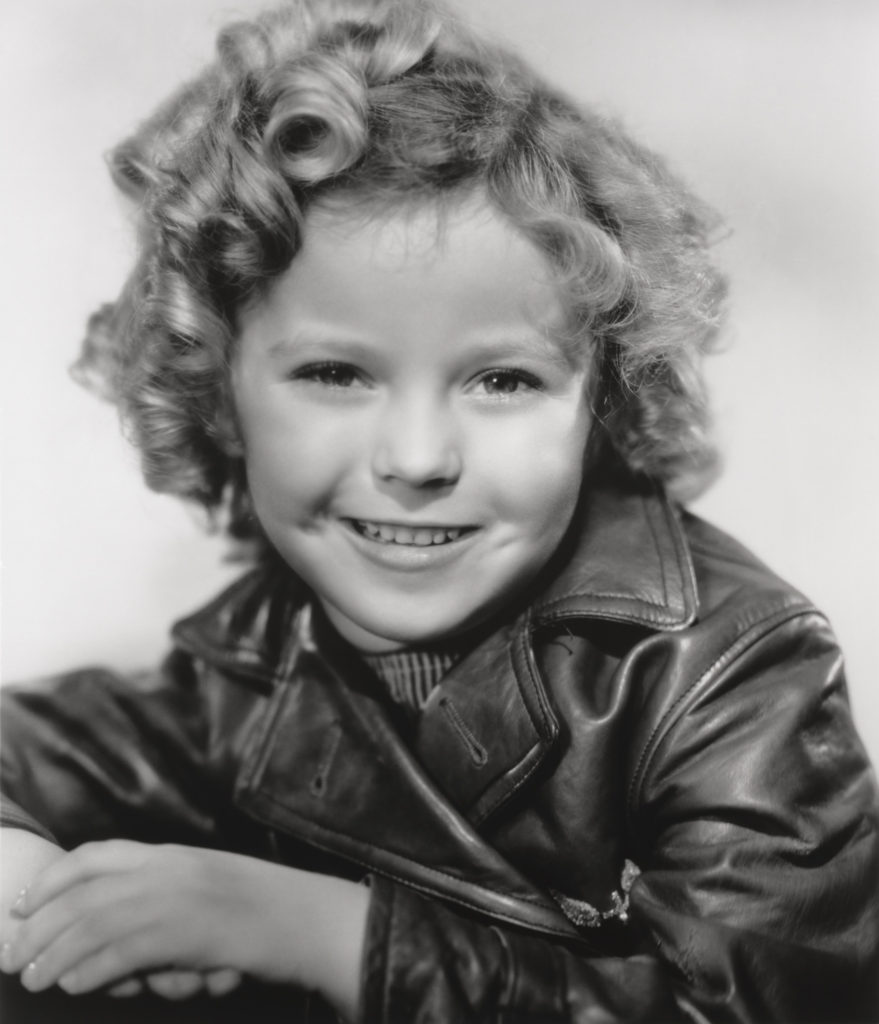
Shirley Temple — at one point the highest grossing star in American films (and who even more recently passed away at the age of 85) — is probably best summed up, as a child star phenomenon, in an October 1937 review of her movie, Wee Willie Winkie. The review, originally appearing in the film journal Night and Day, was written by English novelist Graham Greene:

In this excoriating piece, Greene singled-out what he termed Temple‘s “dubious coquetry” – claiming the child star’s performance style, as created and dictated by her adult handlers, appealed mainly to “middle-aged men and clergymen”. (Or to put the latter in more modern terms, “dirty old men and celibate priests”.) He was, of course, dead right. But the resultant 1938 libel suit raised by Temple‘s studio, 20th Century Fox, besides ensuring the end of Greene‘s film reviewing career, also caused Greene to temporarily flee England.
I hasten to add that the precocious “mask of childhood, a childhood skin-deep”, borrowing Greene‘s phrase, was in no way the fault of the child, but rather the studio that manufactured, encouraged, and exploited it.
So it’s rather satisfying seeing King Homer gobble up this gag-inducing, cutesy-cutesy sprite. Or its “image”, at least.
13:24:


Shot of Empire State Building: Famously, Kong was an early visitor to the recently constructed skyscraper — then the tallest structure in the world — which had been dedicated on May 1, 1931.
13:31:
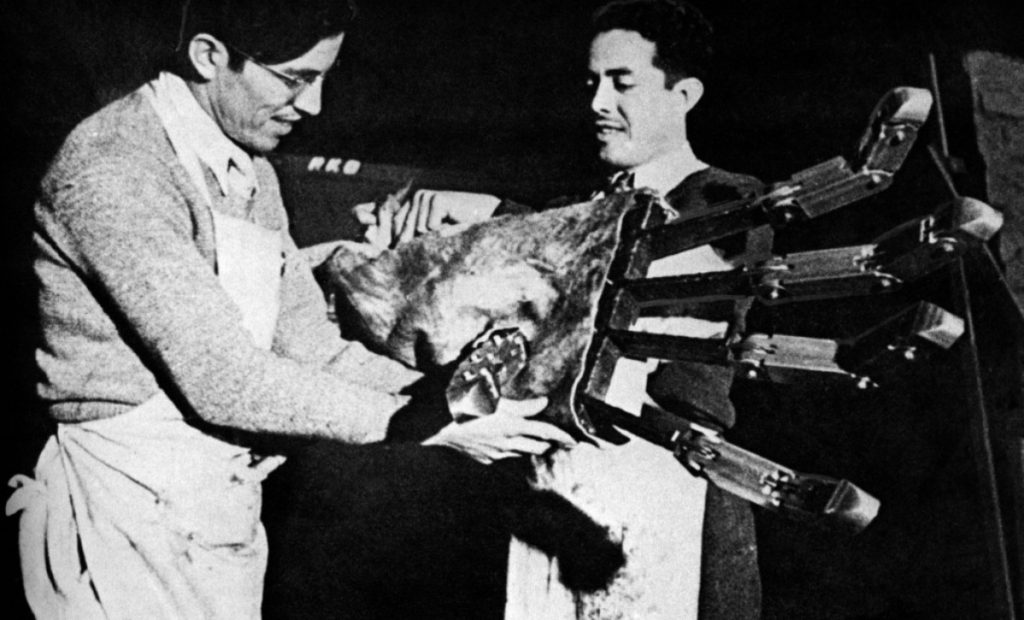
King Homer’s gigantic hand and forearm reaches into Marge’s apartment and grabs her: Again, another reference to the huge, to-scale models created for King Kong by Marcel Delgado and his team. They constructed two (right) hand and forearms (again, out of steel and rubber, wrapped in bearskin) for scenes where King Kong grabs at stuff — in this case, at the object of his strange desire.
oh, let’s just say 14:00:

Apologies again for the lack of exact timing, but thought I should make some sort of reference to the Curtiss series biplanes buzzing around the top of the Empire State Building. Which I just did. But don’t even ask me to figure out the model names or spec numbers on those bad boys, ’cause that’s just way beyond me.
I will point out that the 2005 remake definitely used Curtiss O2C-2 “Helldiver”s. Which I gather is a pretty cool plane.
14:12:
I remember when Al Jolson ran amuck at the Winter Garden and climbed the Chrysler Building…
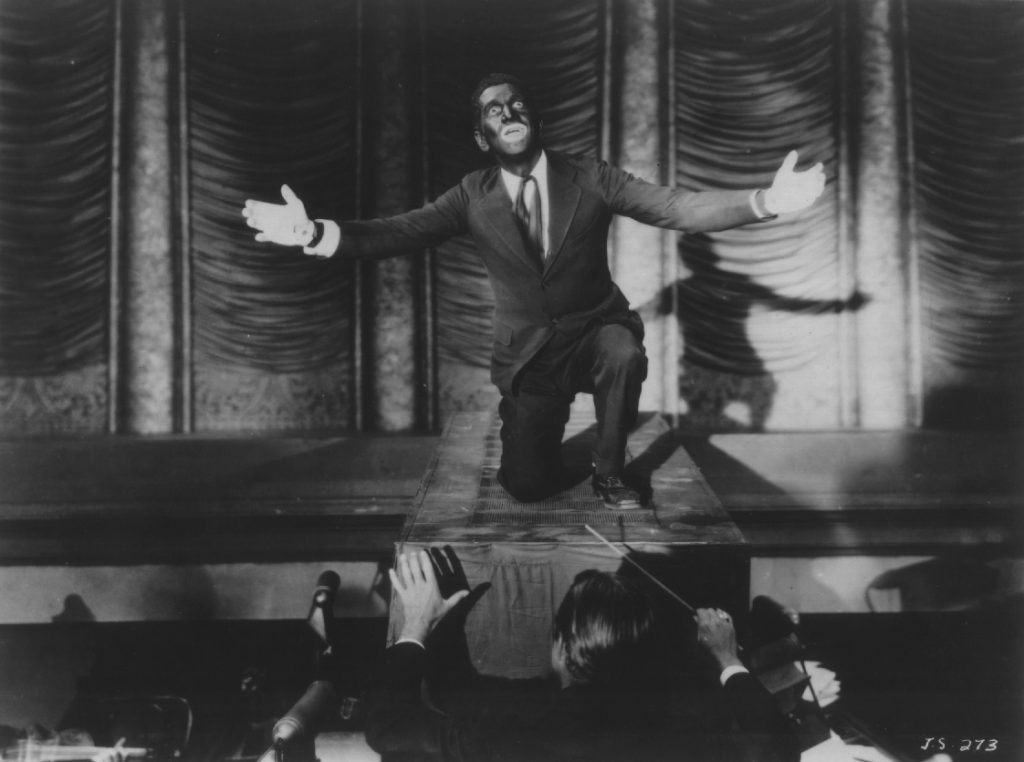
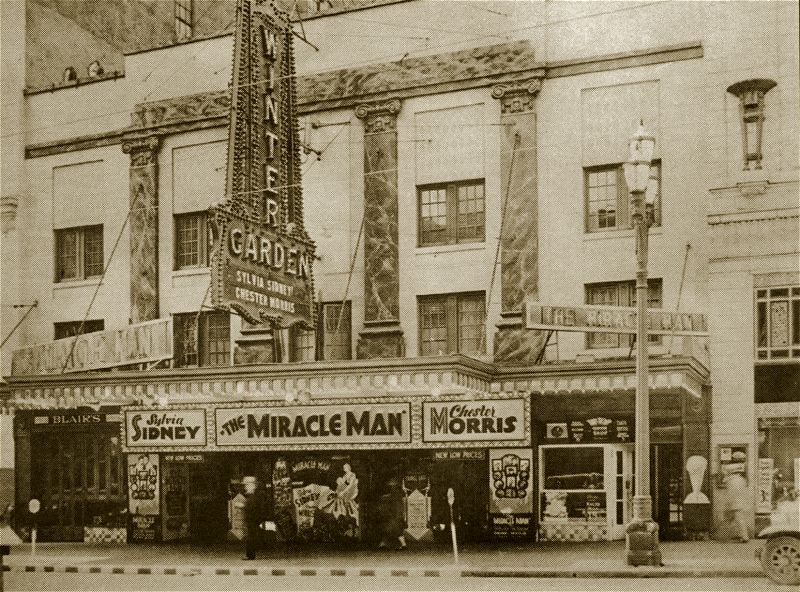

– Al Jolson, exuberant singer/actor/comedian, often performing in blackface, was perhaps America’s first superstar. Besides popularizing jazz, ragtime, and blues for mass audiences, he also starred in the very first sound film, Warner Brothers’ Jazz Singer, released in 1927. Jolson eventually had a theater named after him (Jolson’s 59th Street Theatre), but always considered the Winter Garden Theater at 1634 Broadway his Broadway ‘home’. The Chrysler Building had been the world’s tallest building from its completion on May 27, 1930 to the opening of the Empire State Building in 1931.
14:24 on:
“Woman Weds Ape”; “Dick Cavett Born”
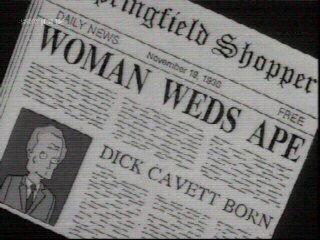


– Actually, if you freeze frame the ‘spinning newspaper’ cue, you’ll see that the spinning article originally read “Woody Allen Born“, accompanied by a photograph of Allen as an adult. Woody Allen, born Allen Stewart Konigsberg on December 1, 1935, began his career as a teenaged TV comedy writer for Sid Caesar, Buddy Hackett, and Bob Hope, among others, before becoming a highly-influential stand-up comedian, playwright, screenwriter, and, eventually — beginning with 1969’s Take the Money and Run — a director of 47 feature films (to date), including the 1977 Best Picture Oscar winner, Annie Hall.
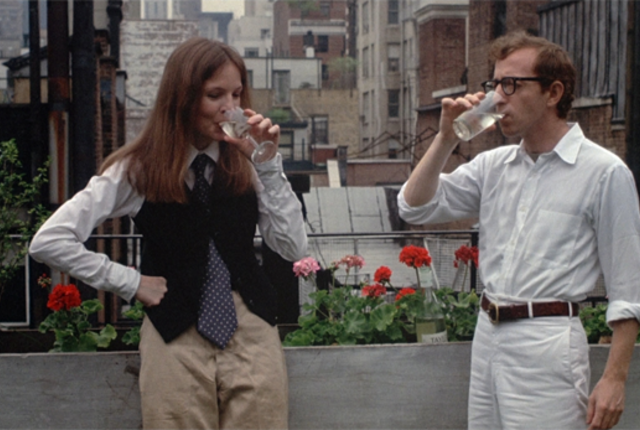
However, one imagines that, in 1992, all the (then-)current Allen-relationship-with-his-(then-)girlfriend Mia Farrow‘s stepdaughter, Soon Yi-Previn, flak (the pair wed in 1997) caused the writers to change the joke to Dick Cavett.
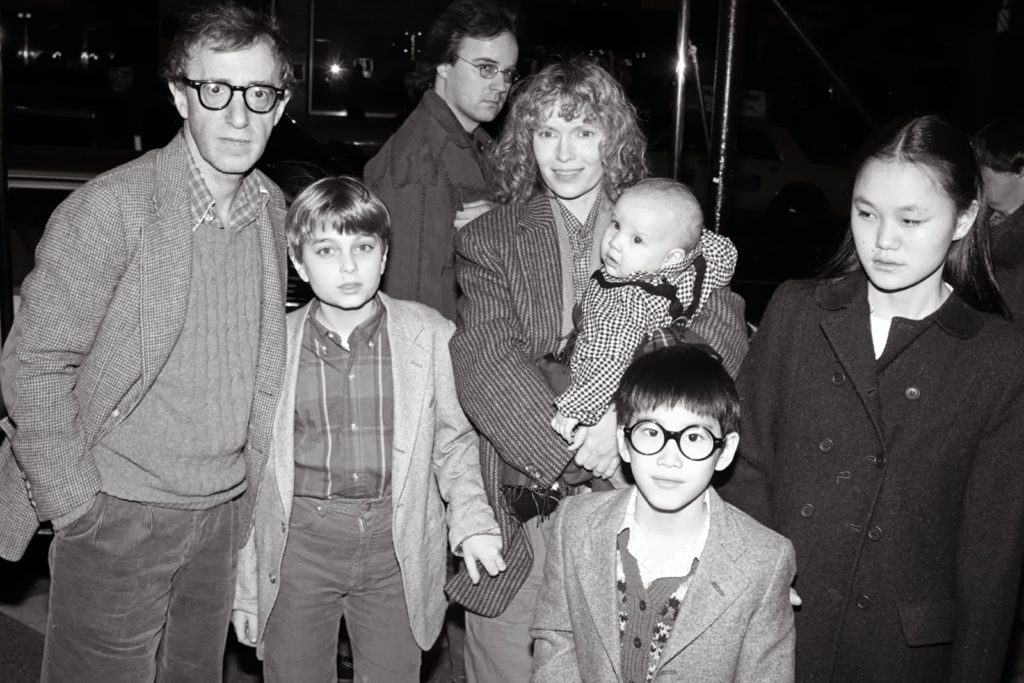
Allen (left), actress (and former Allen domestic partner) Mia Farrow (center), Mia Farrow’s adopted step-daughter Soon-Yi Previn (far right) in the mid-1980s

Soon-Yi Previn and Woody Allen today
And it’s somehow funnier with Cavett. Don’t ask me why.
As pointed out by the date on the newspaper, Cavett was born on November 19, 1936 and grew up to become an extremely witty and very urbane talk show host. The Dick Cavett Show – featuring in-depth interviews with celebrities, artists, intellectuals, public figures, and policy-makers alike – has run from 1967 to 1987 on, in succession, ABC (1968 – 1974), CBS (1975), PBS (1977 – 1982), USA Network (1985 – 1986), and ABC again (1986 – 1987). Revivals of the show have aired on CNBC (1986 – 1996), Olympia Broadcasting (1985 – 1989; as a syndicated radio broadcast), and, most recently, Turner Classic Movies (2006 – 2007).
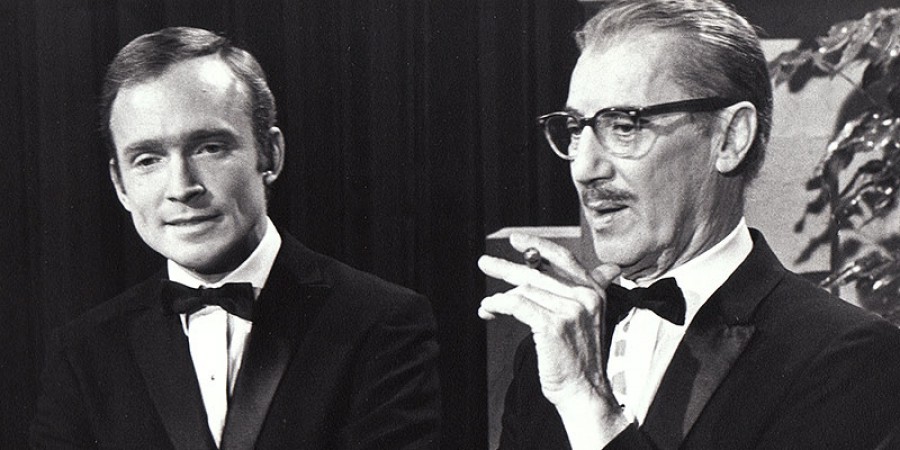
Dick Cavett and frequent interviewee Groucho Marx
14:49 on:
Oh, Homer!
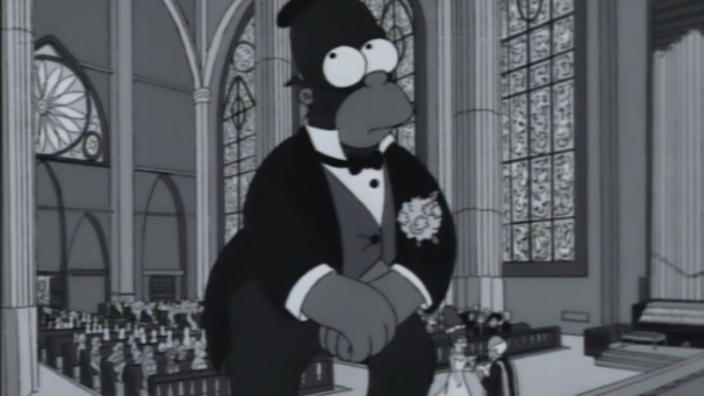
– The segment ends, like the previous Clown Without Pity segment, with a cheesy music cue and heart-shaped iris, taken again from Love, American Style.
IV: Dial ‘Z’ for Zombies
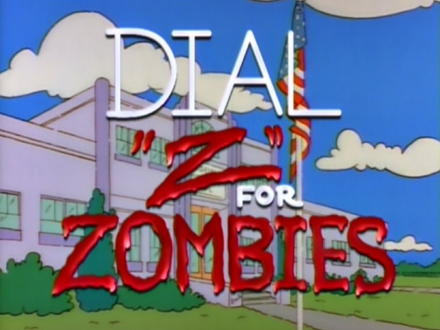
Context: Well, first the title. Like Clown Without Pity, the segment has almost nothing to do with its referent, but — anyway — the title is a play on Dial M for Murder, a 1952 thriller play by Frederick Knott that was turned into, though never exhibited as, a 3-D movie.
I mean, the film was of course exhibited, but never in 3-D.
The film, by Alfred Hitchcock, was released in two dimensions in 1954.
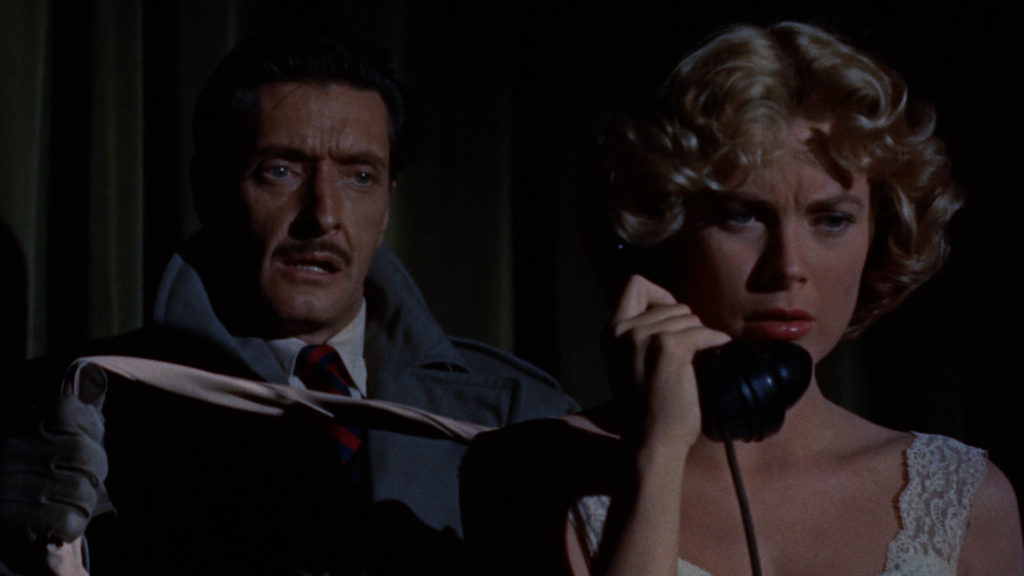
Dial M For Murder (1954)
Though not making direct reference to the film, the segment, featuring zombies, is more indebted to director George A. Romero‘s 1968 Night of the Living Dead.
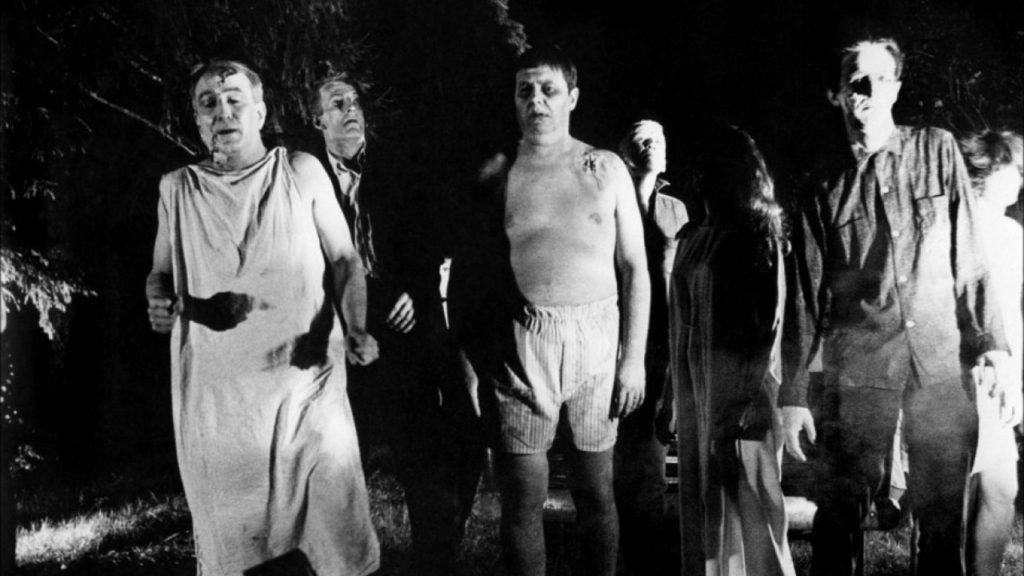
Night of the Living Dead (1968)
As is any post-1968 zombie story. If you go back and look at old zombie yarns like White Zombie (1932), The Walking Dead (1936; a Warner Bros. film directed by Michael Curtiz with no relation to the later 2003 comic book series or later 2010 – Present AMC TV series), and I Walked With a Zombie (1943), you’ll find nary a trace of the shambling, putrefying, flesh-devouring walking corpse of cultural familiarity. Romero invented those tropes.
Oh sure, you’ll say: The Italians. Freda, Bava, Fulci and so forth. But let’s not split hairs here.
Onwards!
15:51:
Find Waldo Yet Again

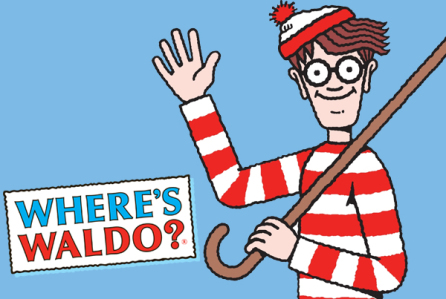
— A Simpsons fictional installment in the popular spot-the-goofy character series. Waldo, originally called Wally, is a glasses and red-and-white shirt-wearing cartoon character who’s perpetually lost in a crowd. UK illustrator Martin Handford published Where’s Wally in 1987 and subsequently changed the character’s name for foreign markets and in foreign language translations. In Germany he’s Walter, in Estonia he’s Volli, and in Japan he’s Wauri.
In France, inexplicably, he’s Charlie.
16:04 on:
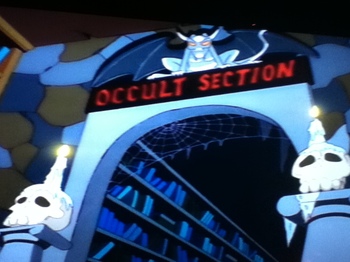
Occult section of Simpson Elementary School Library has Dewey Decimal # 666: In actuality, call # 666 is “Ceramic & Allied Technologies”.
16:11:
Time Life Book of Magick and Spelles Vol. # 2
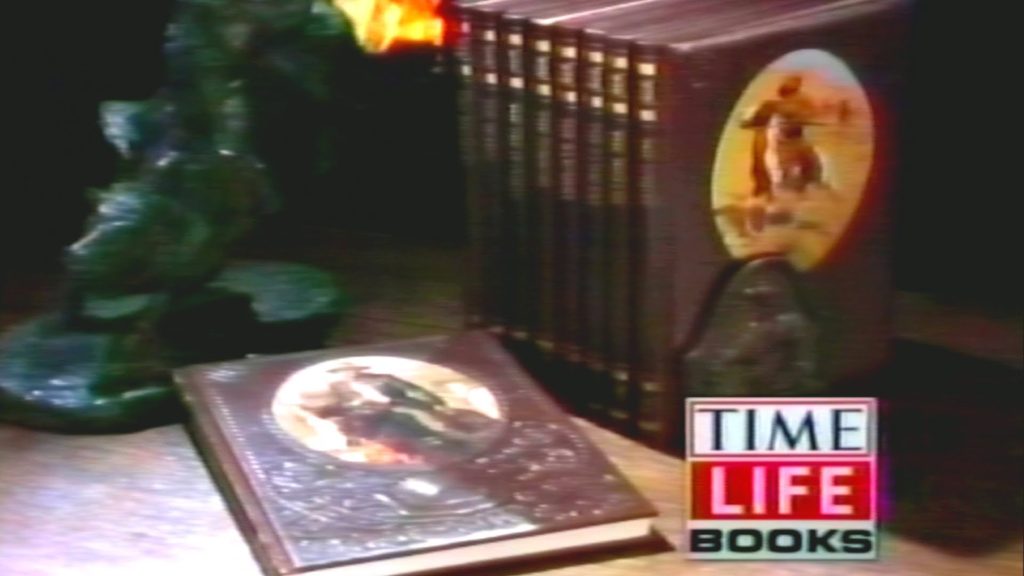
– Another Simpsons fictional title that always makes me laugh. Time-Life was/is just a notch above Reader’s Digest Condensed Books as a tireless publisher of crap.
17:06 – 17:11:
Pet Cemetery
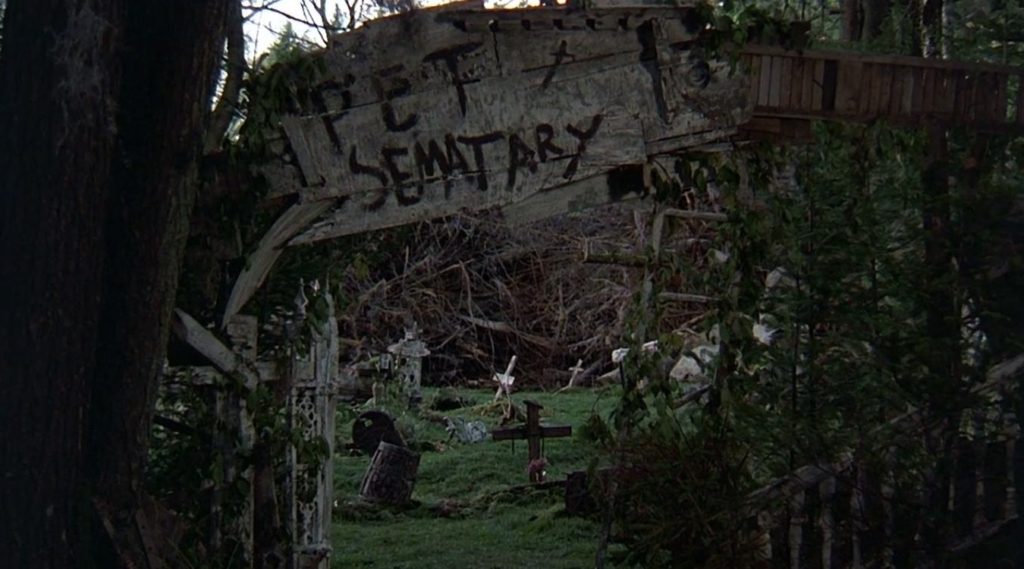
– Any reference to a dead pet burial ground instantly brings to mind Stephen King‘s 1983 horror novel, (and subsequent 1989 movie) Pet Sematary. (Which was, in turn, possibly inspired by Errol Morris’ 1978 social documentary on the pet cemetery business, Gates of Heaven.) So I thought I’d just get that out of the way. More interesting — to me, at least — are the graves for Fish Police, Capitol Critters, and Family Dog. These were all primetime animated sitcoms that, in the wake of The Simpsons success, had arisen as imitators and had quickly bitten the dust.
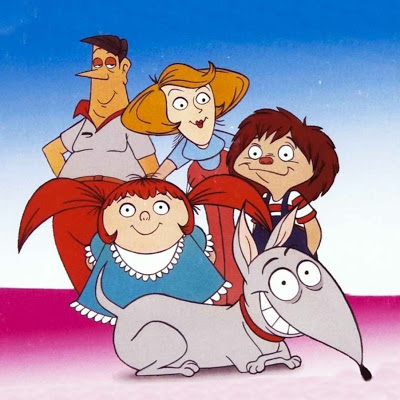
Family Dog (1993)
Family Dog wasn’t bad, though.
17:17 – 17:25:
Cullen, Rayburn, Narz, Trebeck!
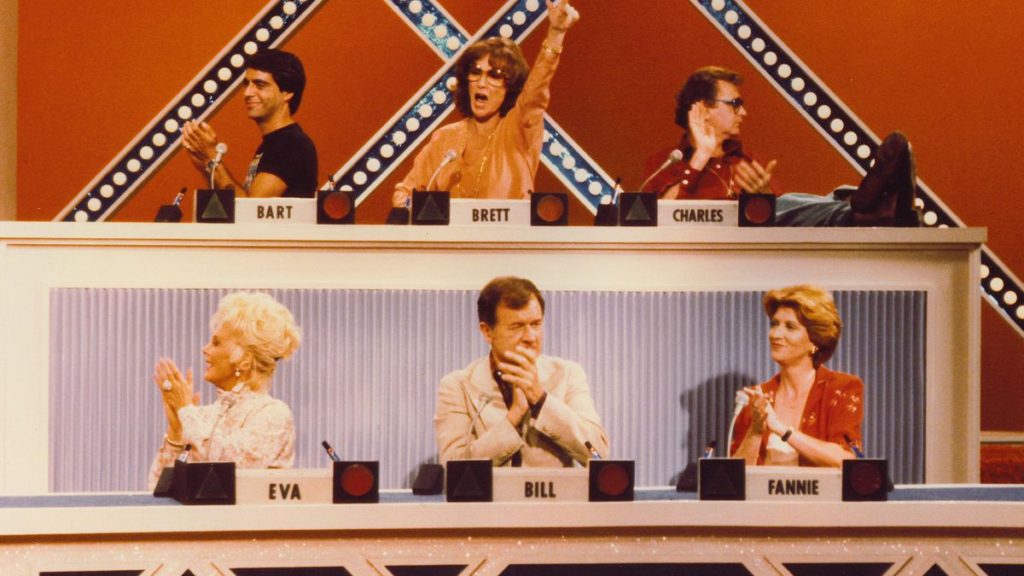
A very ’70s episode of The Match Game (1973 – ’79)
– Bart, meaning to raise Snowball I from the dead, accidentally casts a spell that revives every ex-resident of Springfield as a zombie. The spell consists of last names of famous game show hosts. Bill Cullen, Gene Raymond, and Jack Narz were the hosts of, respectively, The Price is Right, The Match Game, and Beat the Clock. Alex Trebeck is the current host of Jeopardy!.
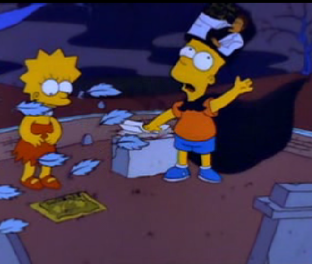
– Wearing the album cover of Michael Jackson‘s 1982 Thriller on his head, Bart, with the turban-like headgear and black cape, looks an awful lot like Johnny Carson‘s Carnac the Magnificent character. Many Simpsons writers, including two producers of this episode, Al Jean and Mike Reiss, had been part of Johnny Carson‘s Tonight Show writing staff.

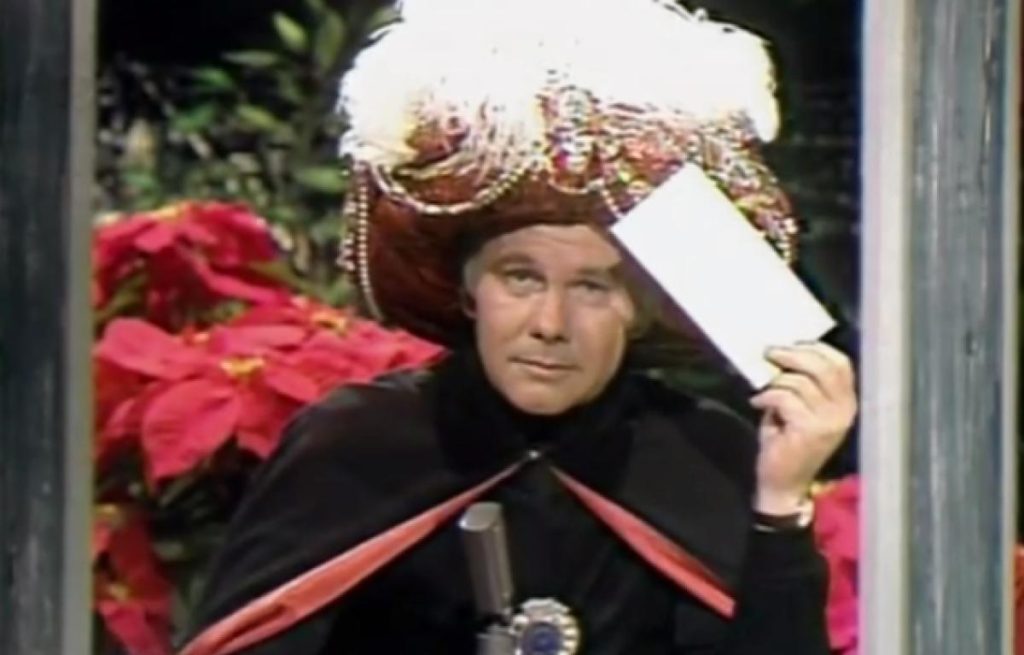
Zabar, Kresge, Caldor, Walmart!

– Bart’s second spell consists of American chain stores. Caldor has since shut (all) their doors due to forced bankruptcy.
17:28 – 17:30:
Jay Kogan, W(ally) Wolodo(rsky)

– More tombstones. These are of Simpsons writers from the early years of the show. (The late 1980s dress and manner of Wally Wolodorsky had been the inspiration for the character of Heavy Metal-loving, responsibility-hating Otto the Bus Driver.)

17:44:
Please, Lis, they prefer to be called the “Living Impaired”.
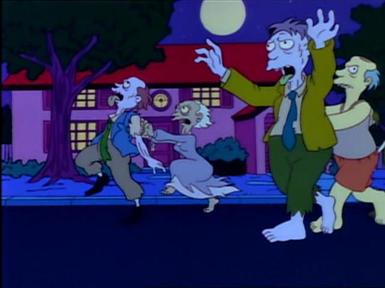
– The exact moment I knew Political Correctness had gone too far.
18:02 – 18:18:
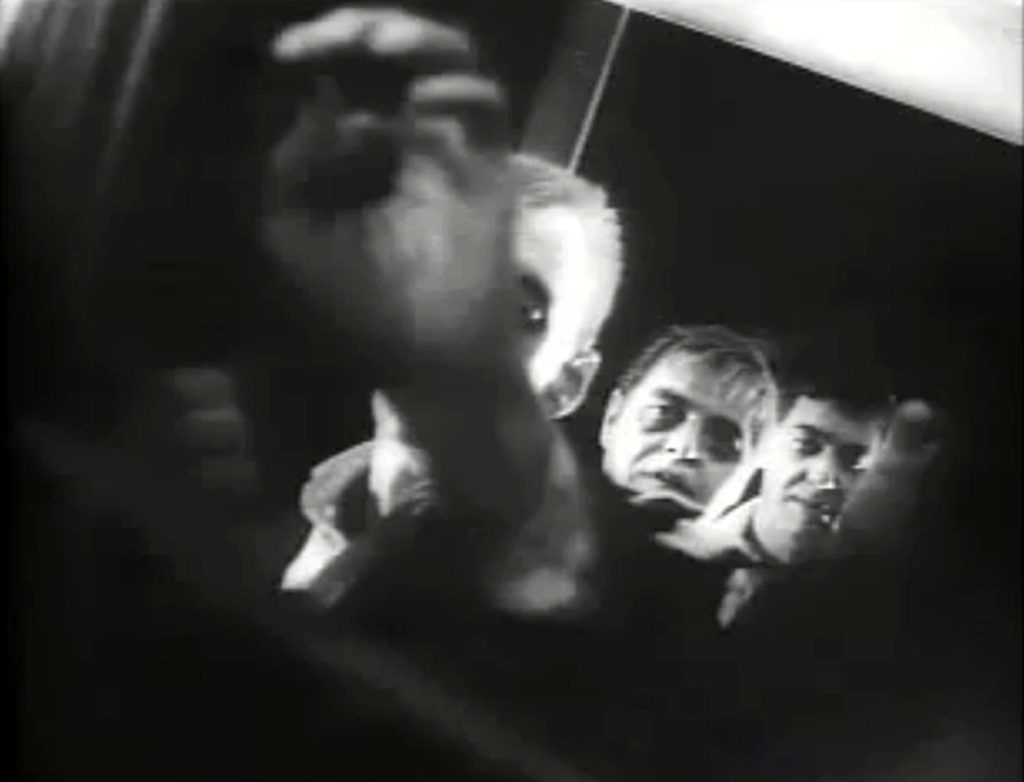 The tilted film angles as zombies make their way down Evergreen Terrace and beat against the Ned Flanderseses’ door are the segment’s closest direct visual reference to George A. Romero‘s Night of the Living Dead.
The tilted film angles as zombies make their way down Evergreen Terrace and beat against the Ned Flanderseses’ door are the segment’s closest direct visual reference to George A. Romero‘s Night of the Living Dead.
18:53 – 19:00:
To enter, send me your parents’ brainssssss….or write “Parents’ Brains” on a 3X5 card and send it to –

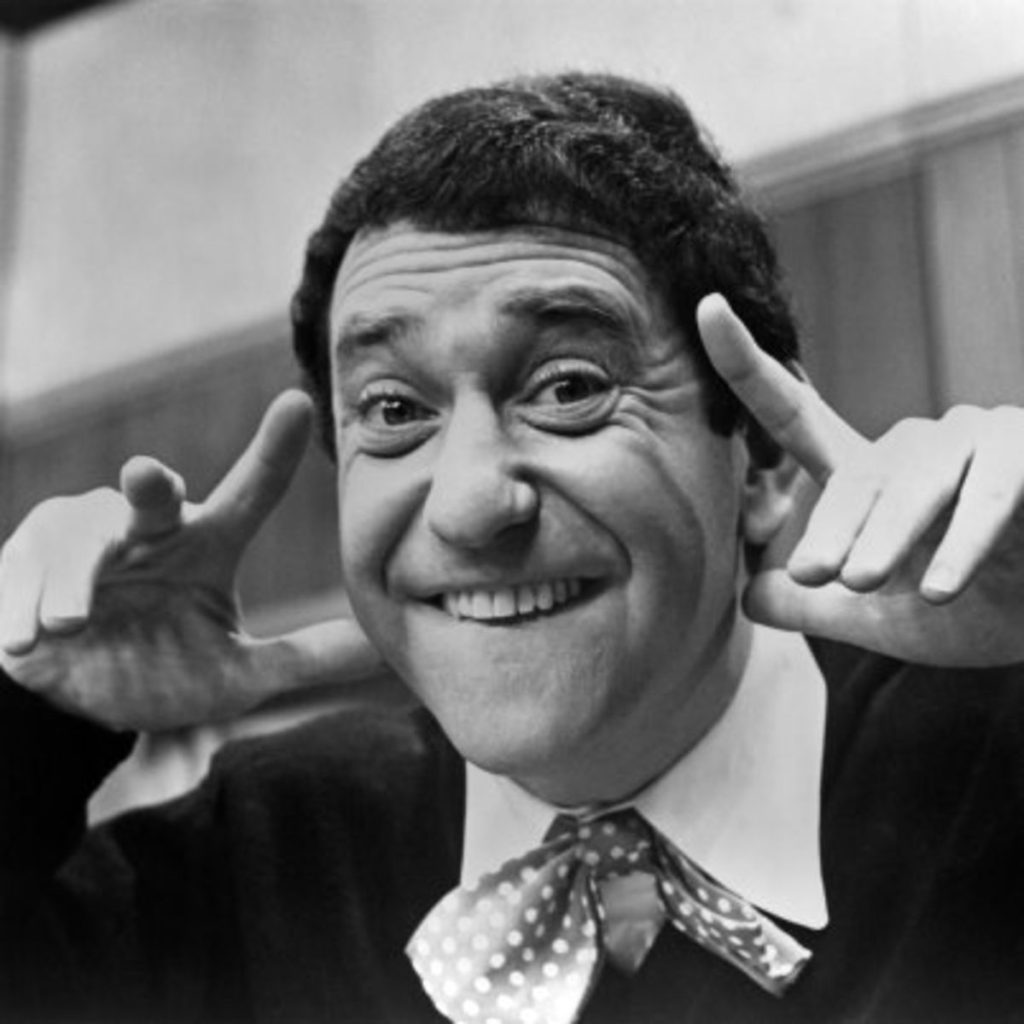
kids show host Soupy Sales
– Zombie Krusty’s request is a take-off on a famous incident where kids show host Soupy Sales, on a live New Year’s Morning program in 1965, encouraged kids to steal money from their sleeping parents and send it to him at his TV studio.
Though he meant it as a joke, some kids actually sent the studio money.
19:31 – 19:33:
Homer says, “To the Book Depository!” while cocking a shotgun with one hand.

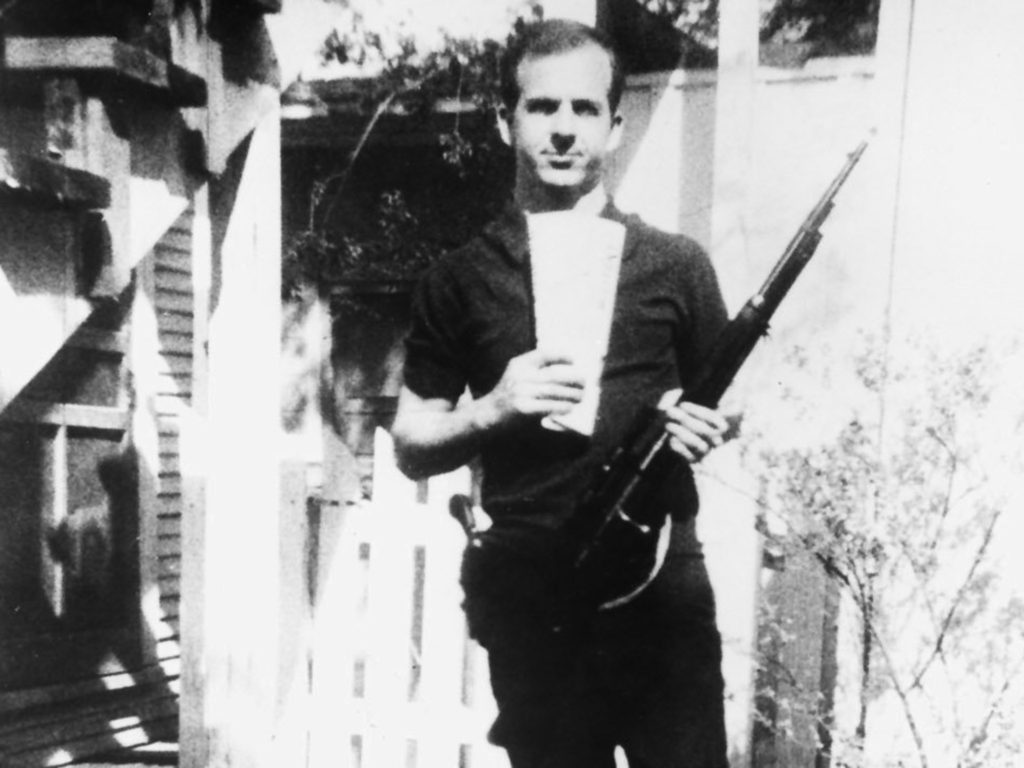
— A reference to the Texas School Book Depository, where, on November 22, 1963, employee Lee Harvey Oswald took fatal shots out of a 6th story window at President John F. Kennedy.
Also, cocking a shotgun in one hand is Ah-nuld‘s signature move from Terminator 2. John Wayne, however, beat Ah-nuld to the draw by 51 years in a famous shot from 1939’s Stagecoach, which the actor later repeated in 1969’s True Grit.
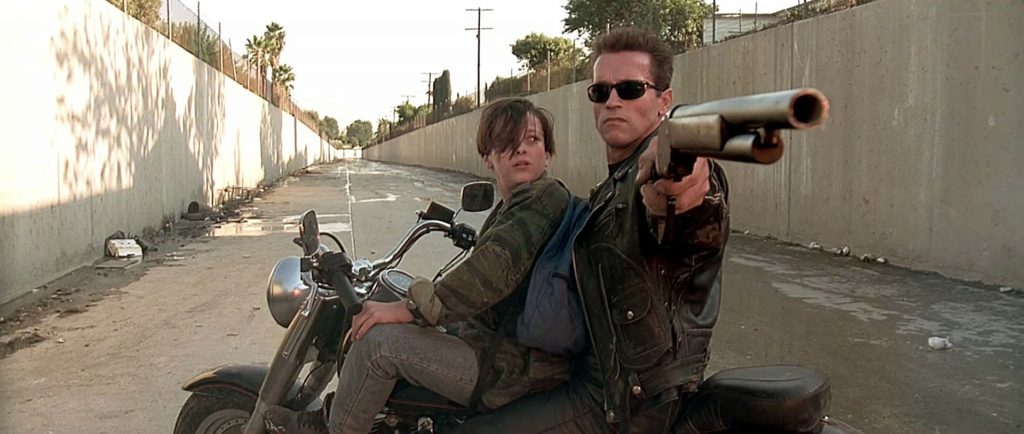
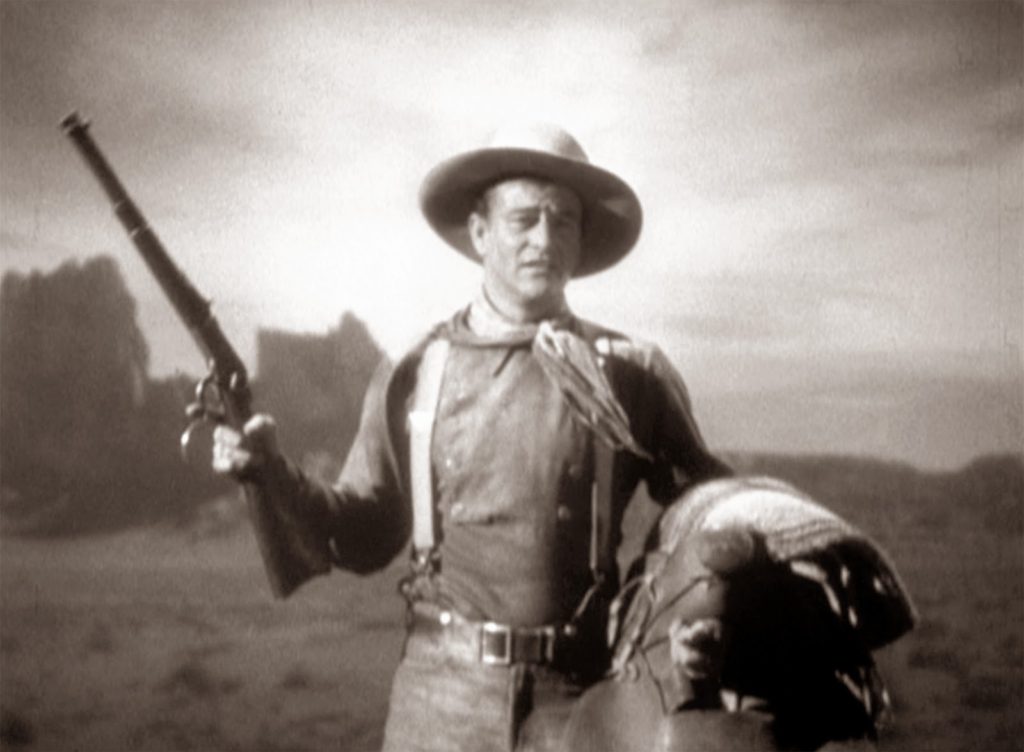
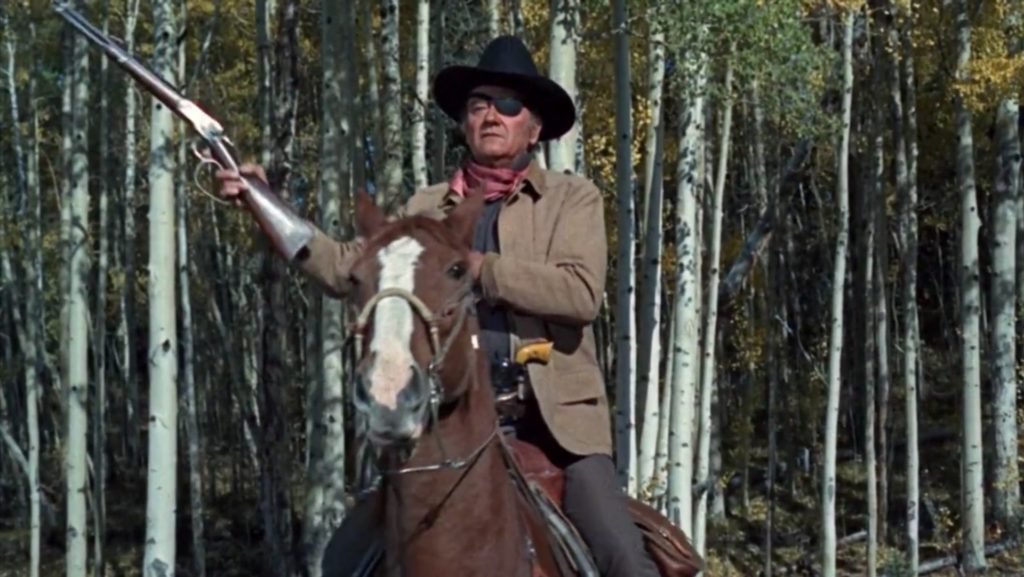
20:01 – 20:21:
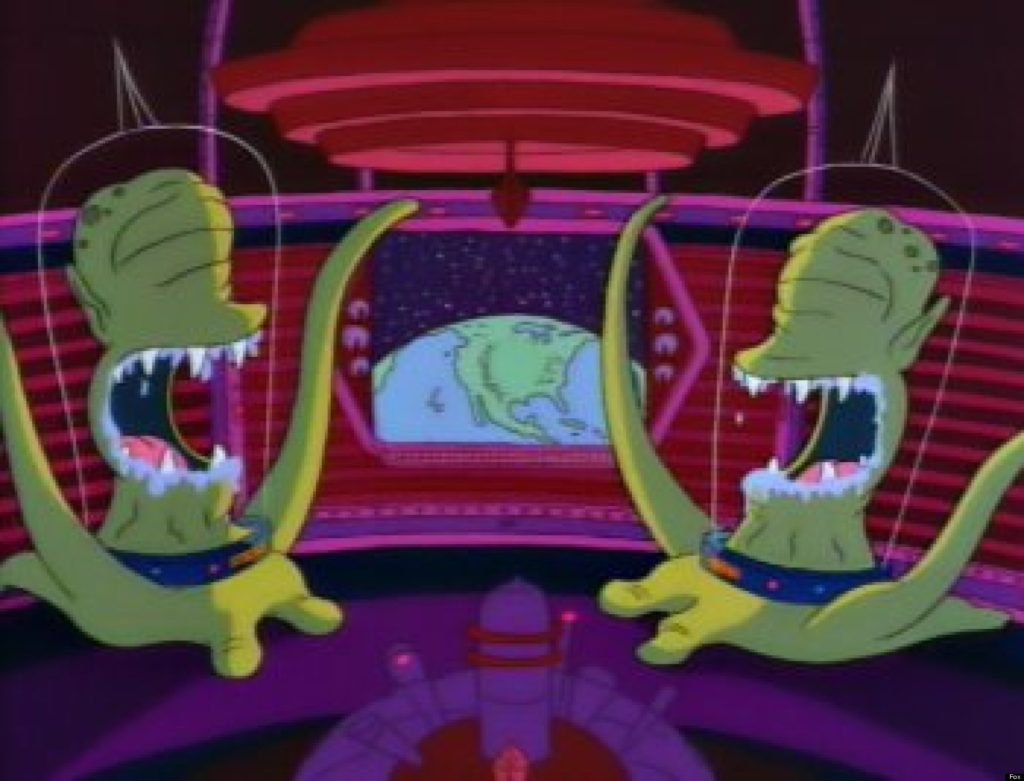
Rigel VII creatures Kang and Kodos make their annual Simpsons appearance — as usual, decrying the futile efforts of the ‘puny humans’. Kang and Kodos were created by Simpsons writers Jay Kogen and Wallace Wolodarsky (names misspelled on the tombstones above) for a segment in the first Treehouse of Horror episode in 1991. The alien duo’s grotesque design was inspired by two covers of the early 1950s E.C. Comics science fiction series, Weird Science.
Judge for yourself!
Kang and Kodos on The Simpsons
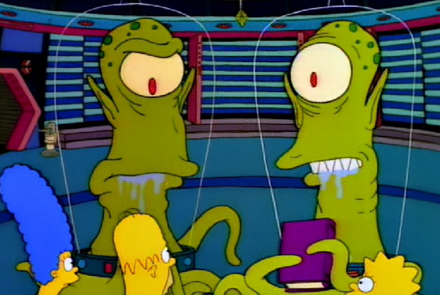
Weird Science # 6 (published for March/April 1951)
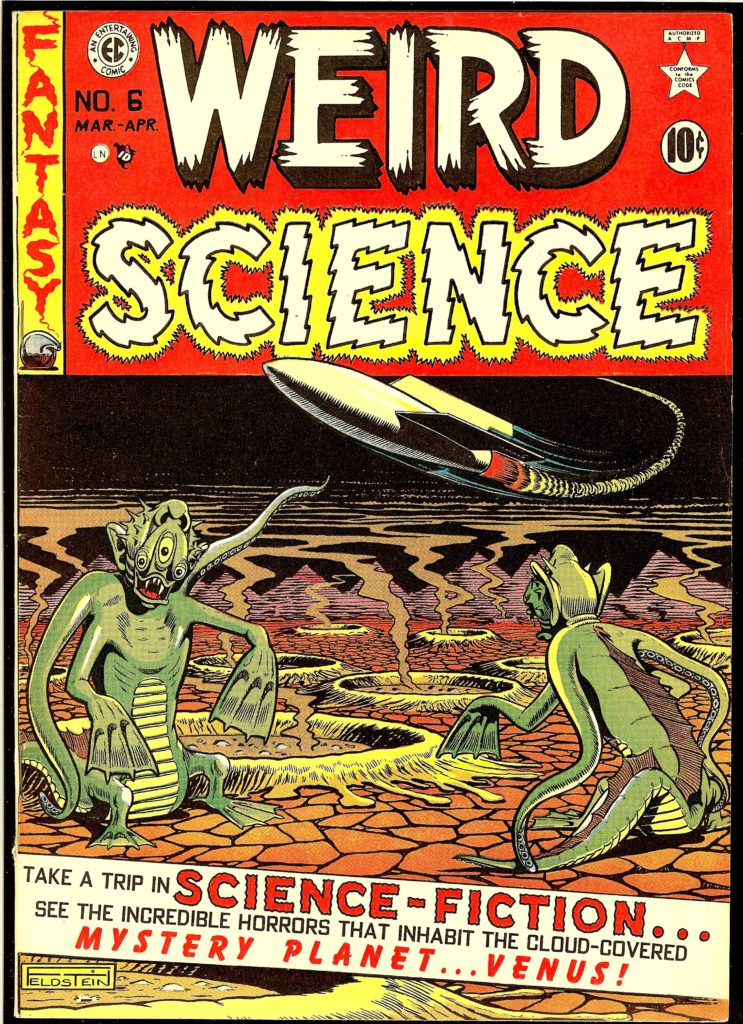
Weird Science # 16 (Nov./Dec. 1952)
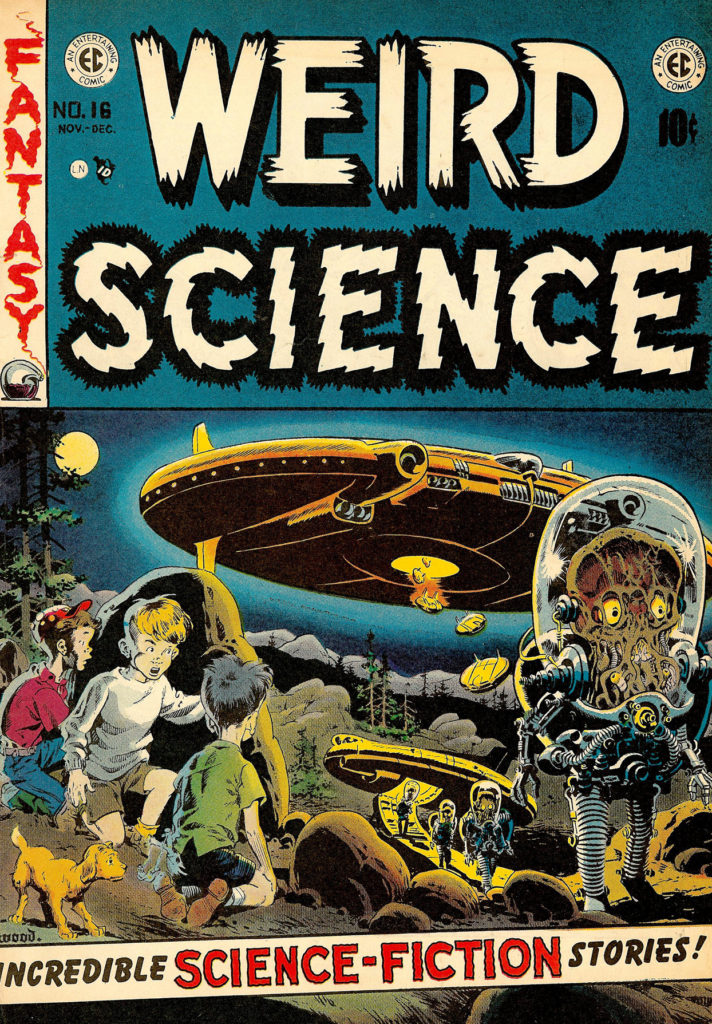
Ain’t the internet grand?
The zombies have the earthlings on the run!
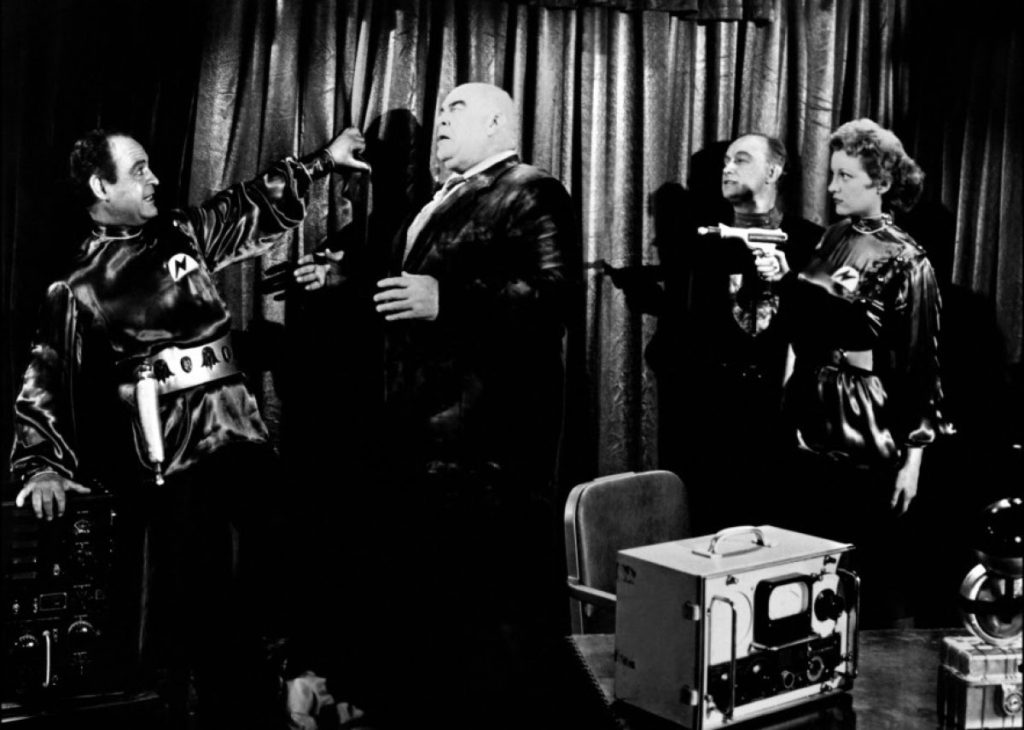
– Echoes a famous line from Edward D. Wood Jr.‘s anti-classic, Plan 9 from Outer Space: “The earthlings are totally incapable of handling the zombie attacks!”
20:43 – 20:55:
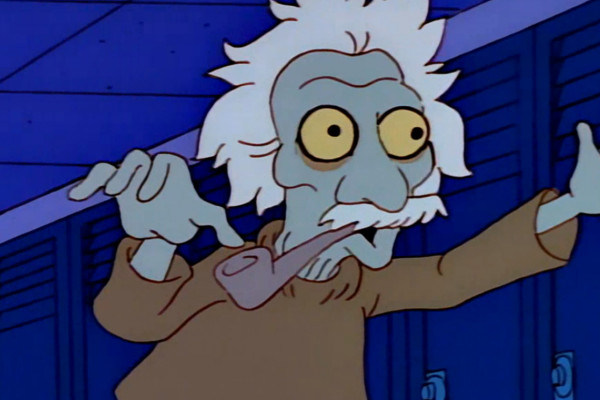
Homer makes short (shotgun) work of, in succession, zombie versions of George Washington, Albert Einstein, and William Shakespeare — all of whose final resting place seems, inexplicably, to be Springfield, USA.
Is this the end of Zombie Shakespeare?
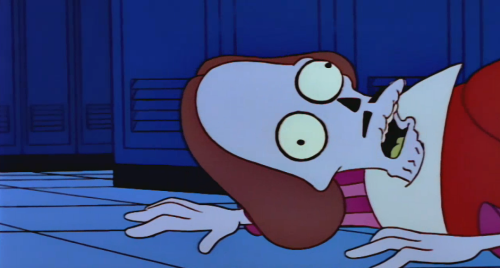
– Zombie Shakespeare’s final words — as Homer crushes his skull — are not from one of William Shakespeare‘s plays, but from the climactic moment of the 1931 gangster classic Little Caesar, where the title character (played by Edward G. Robinson) moans “Is this the end of Rico?” before falling in a hail of gunfire.
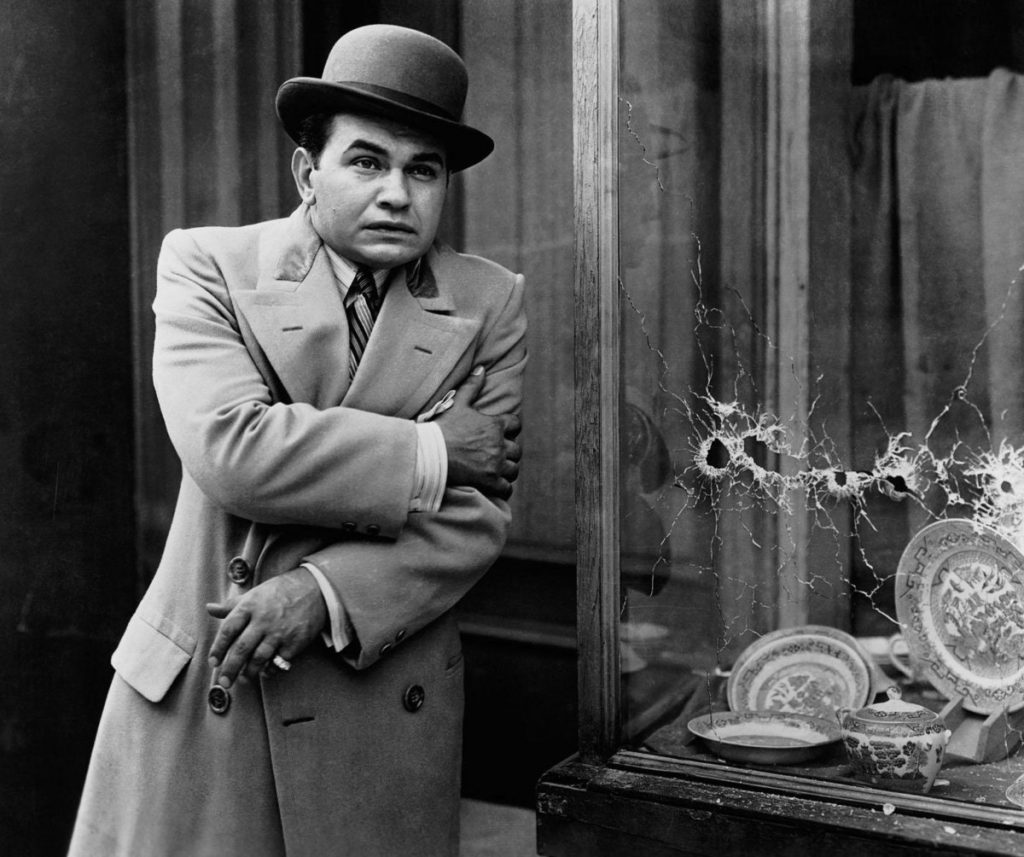
21:04 – 21:16:
Kolchak, Mannix, Banacek, Danno!
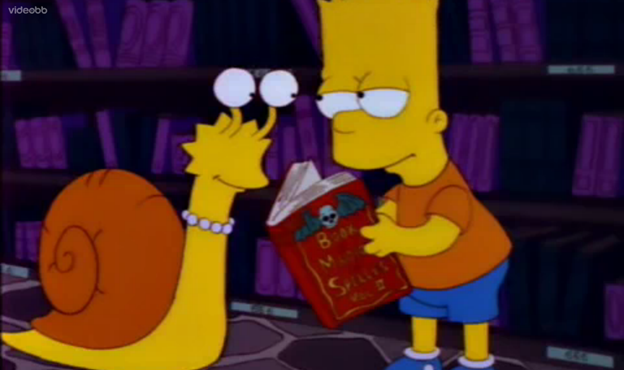
– More spell-casting nonsense (this one turns Lisa into a giant snail). These are all names of detectives from 70s cop shows. In order of reference: Night Stalker, Mannix, Banacek, and Hawaii Five-O.
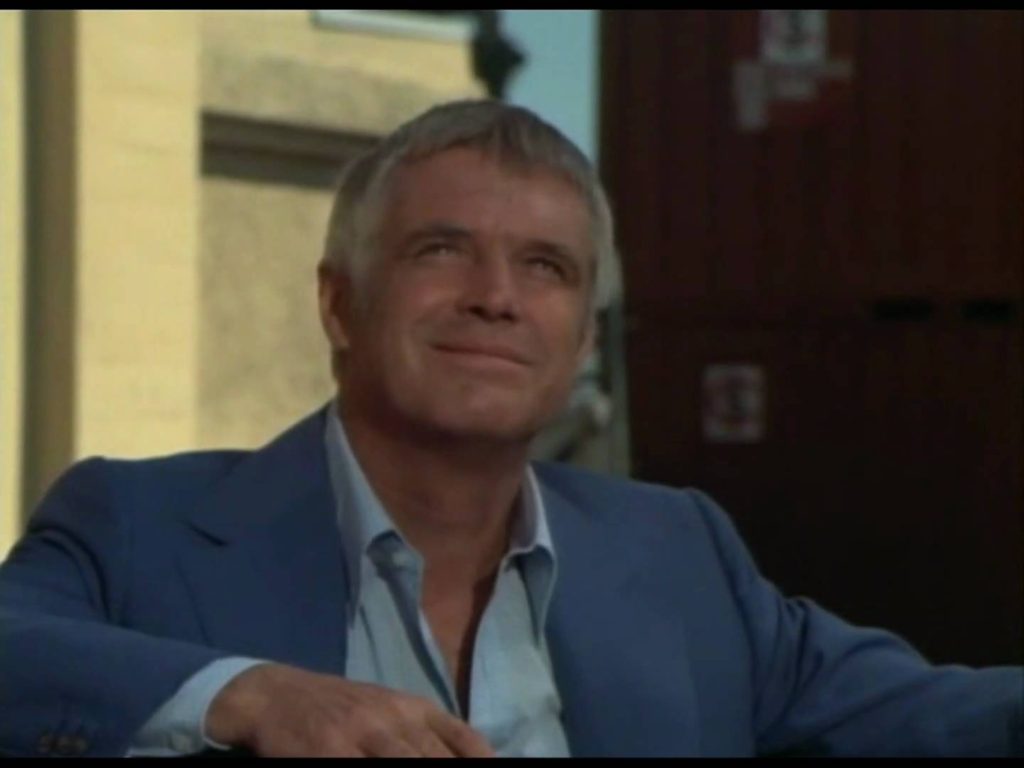
Banacek!
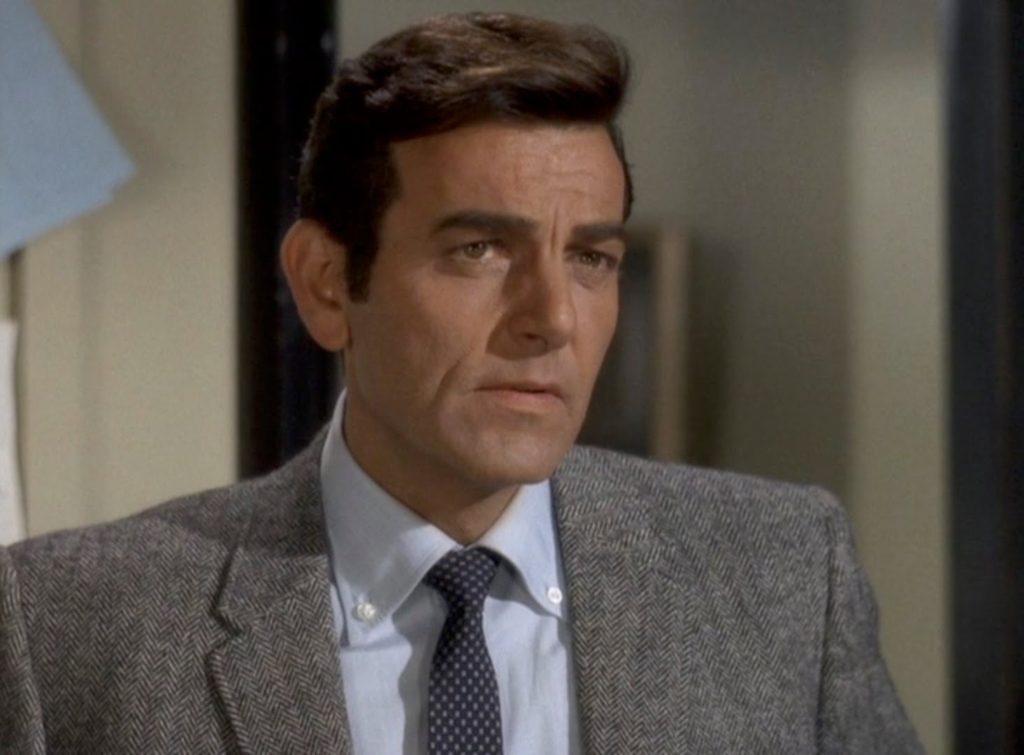
Mannix!
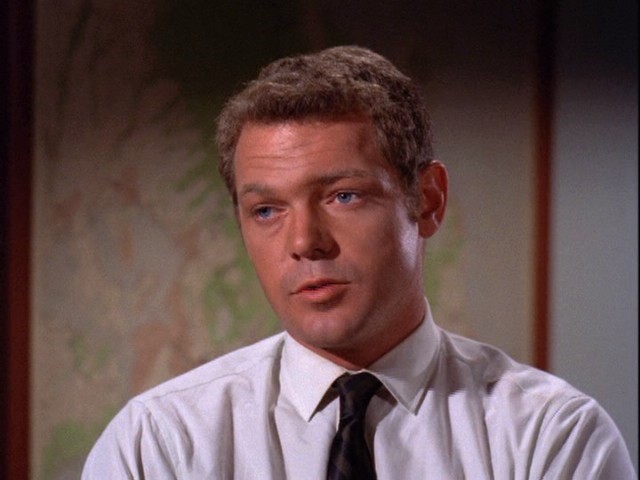
Danno!
UPDATE: Actually, I was wondering if Kojak is more likely than Kolchak? Kojak (Telly Savalas) was a cop, while Kolchak: the Night Stalker (Darren McGavin) was actually an investigative reporter.
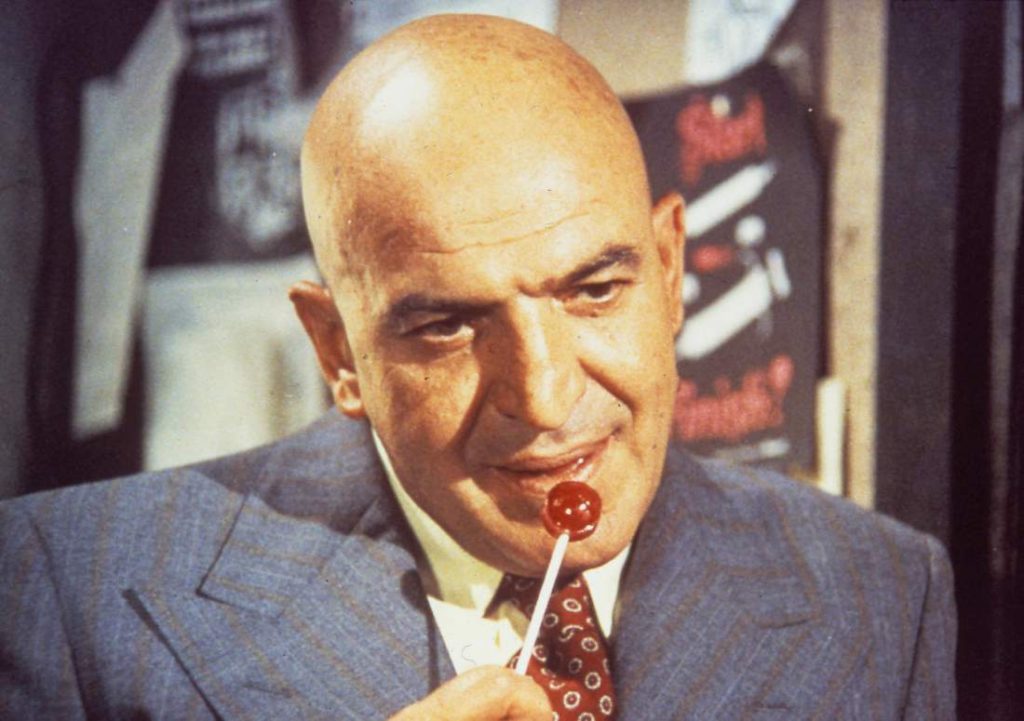
Kojak?
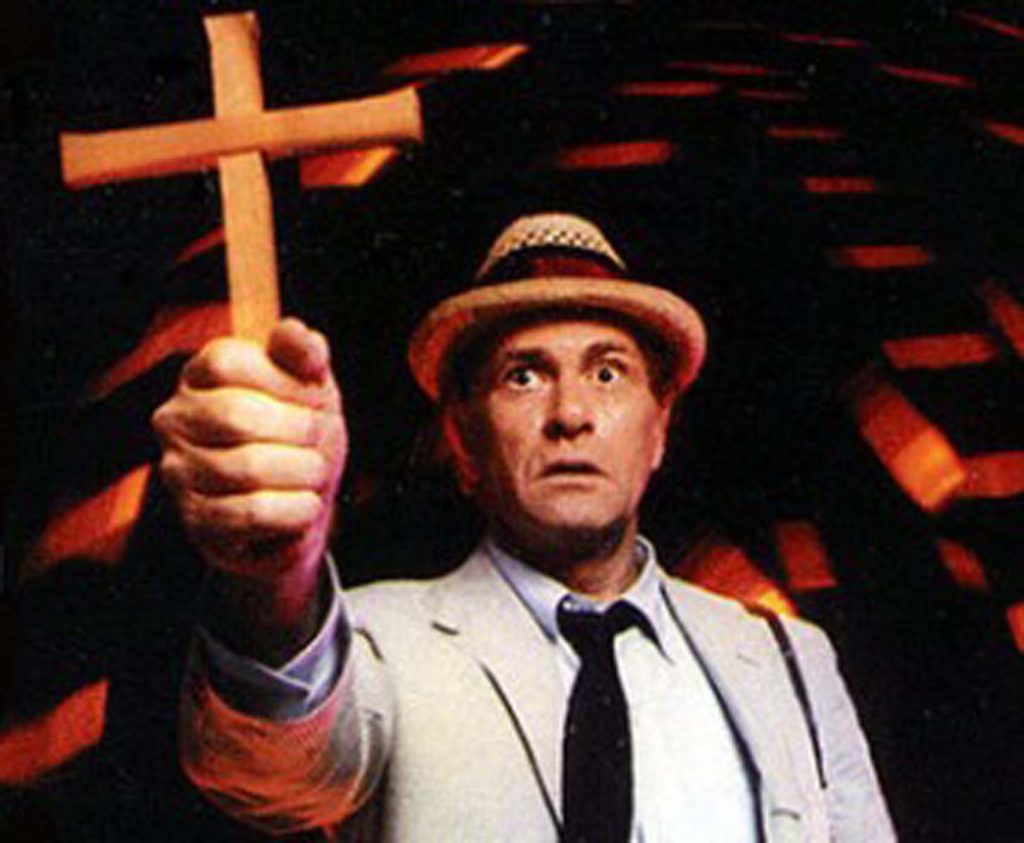
Kolchak?
Trojan, Rameses, Magnum, Sheik!
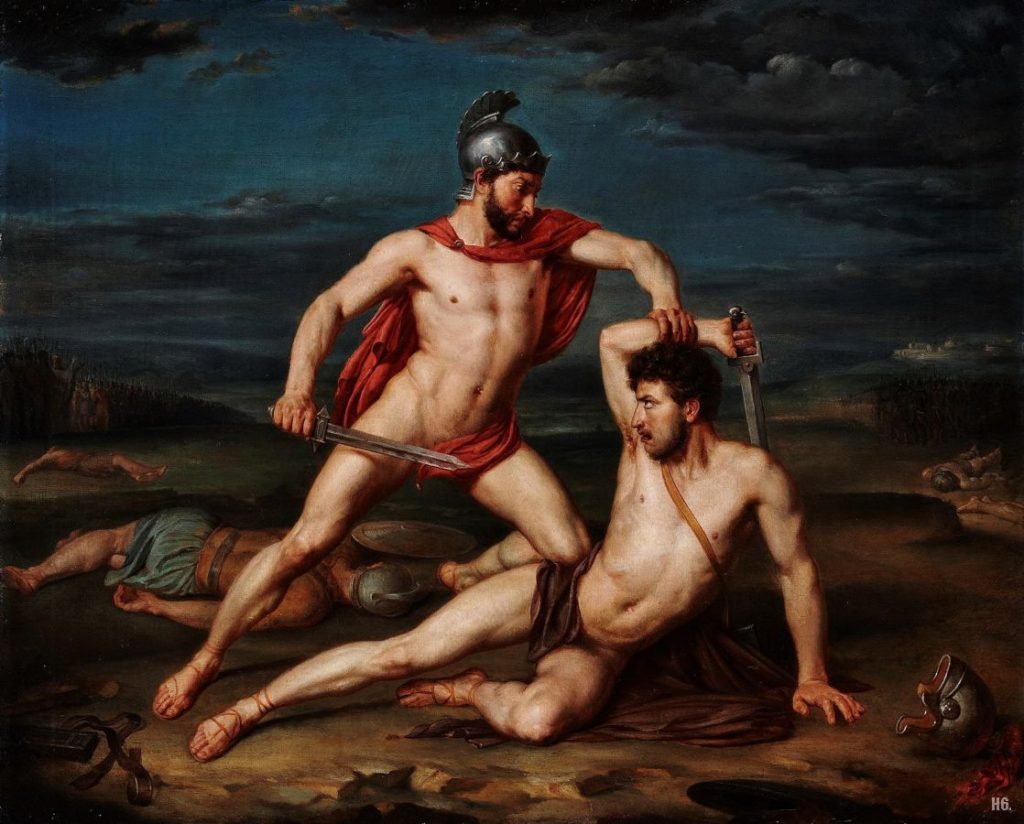
“Trojan”
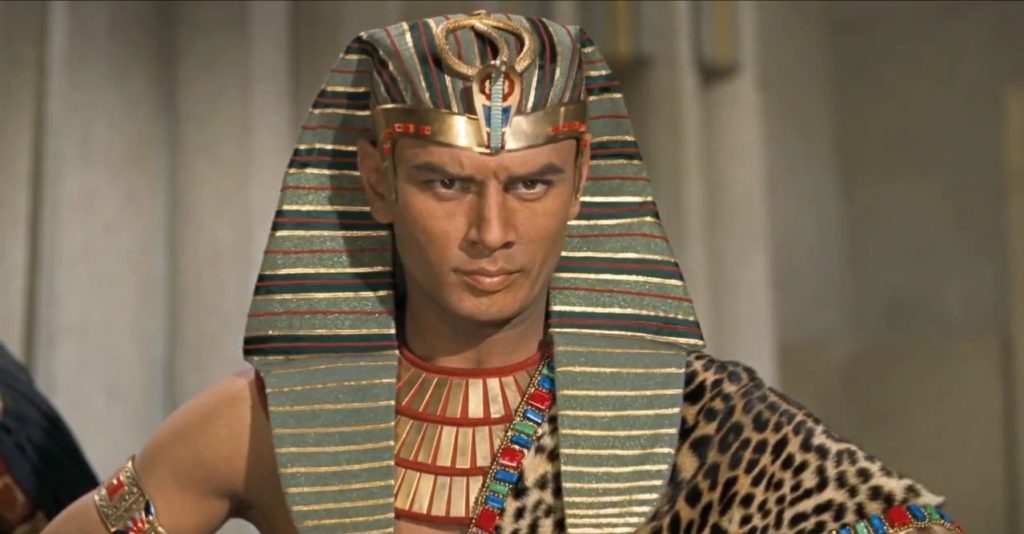
“Rameses”
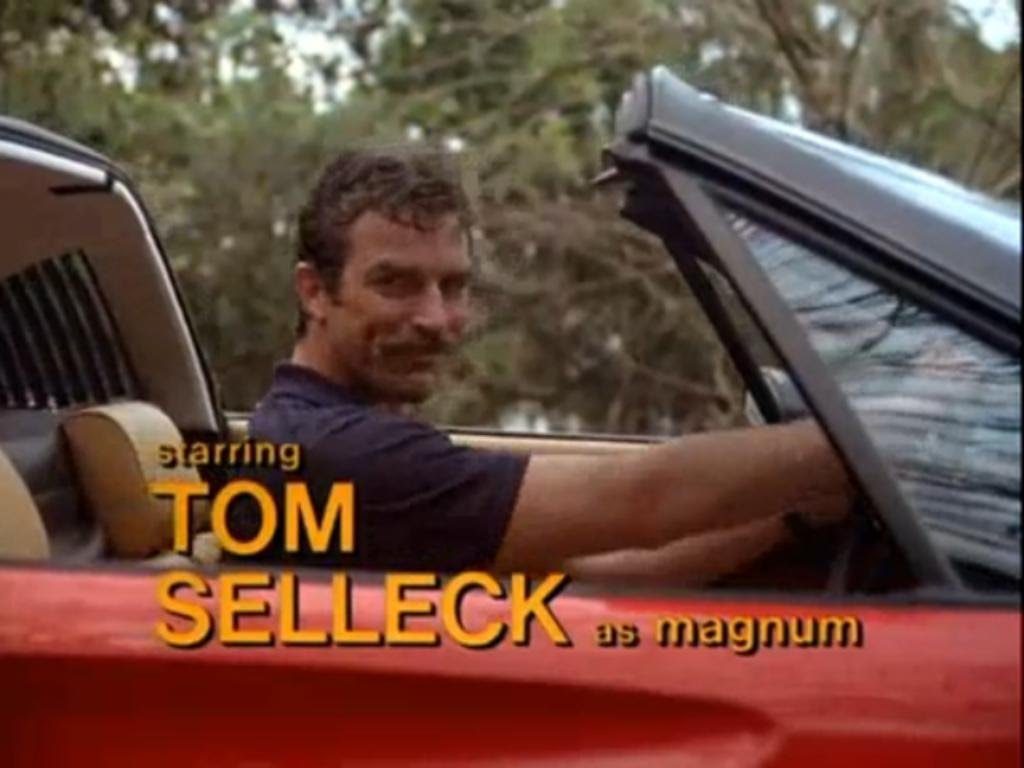
“Magnum”
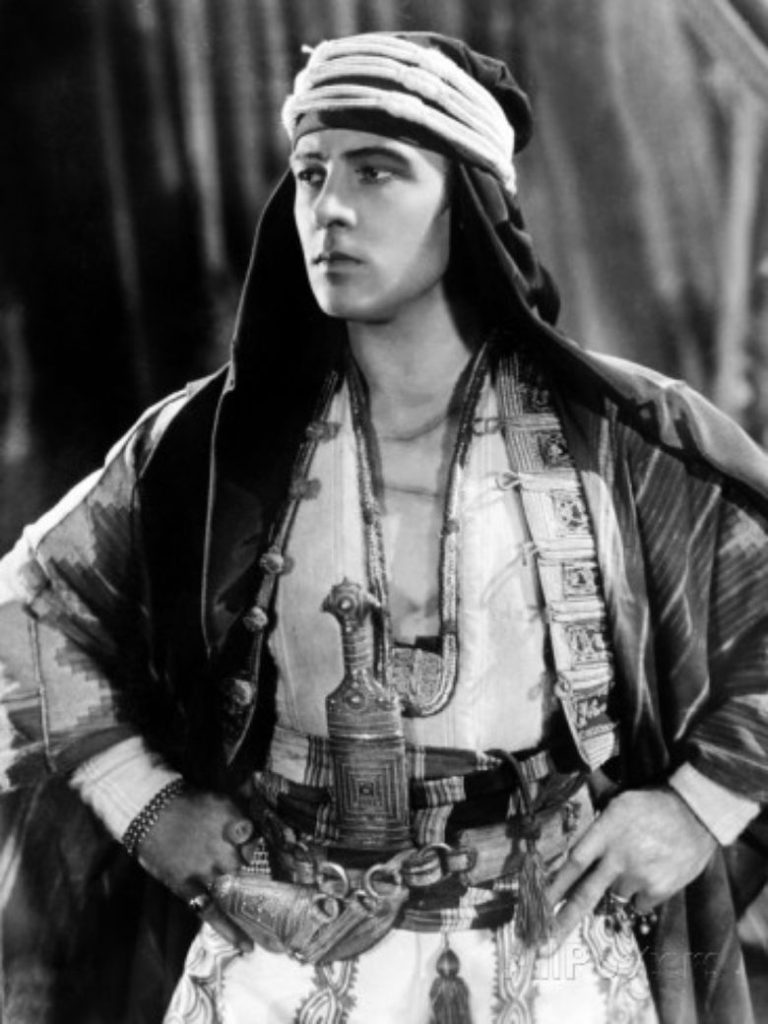
“Sheik”
– The anti-zombie spell, taken from leading American condom brands. Awfully glad my Korean middle-school kids didn’t catch this reference, either!
21:25:
Still pushing that boulder?
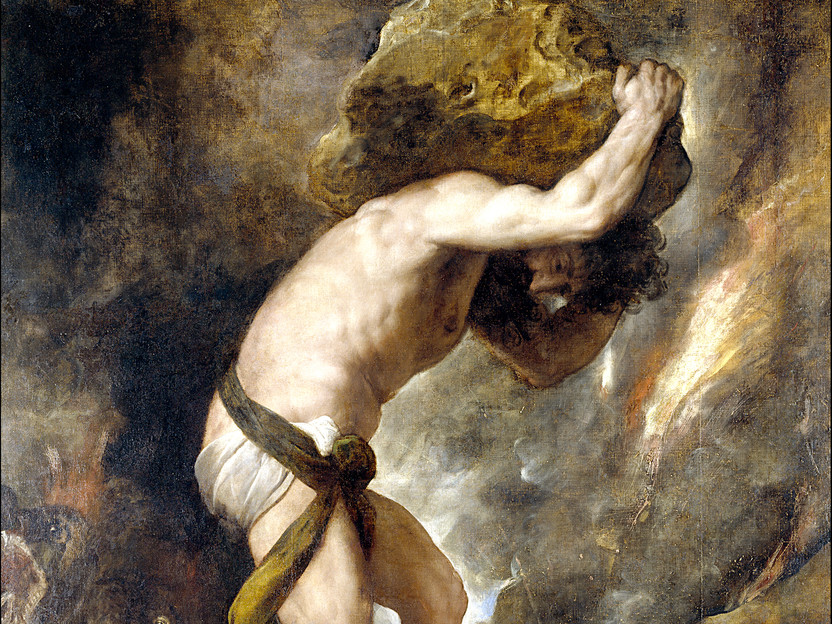
— Reference to the Greek myth of Sisyphus, a wicked king who was punished in the underworld by having to roll a massive boulder up a hill for eternity. (Sort of like me compiling this photo-essay.)
21:48:
Marge says, “Well, I’m sure glad we didn’t turn into mindless zombies” while the Simpsons family mindlessly watches TV.
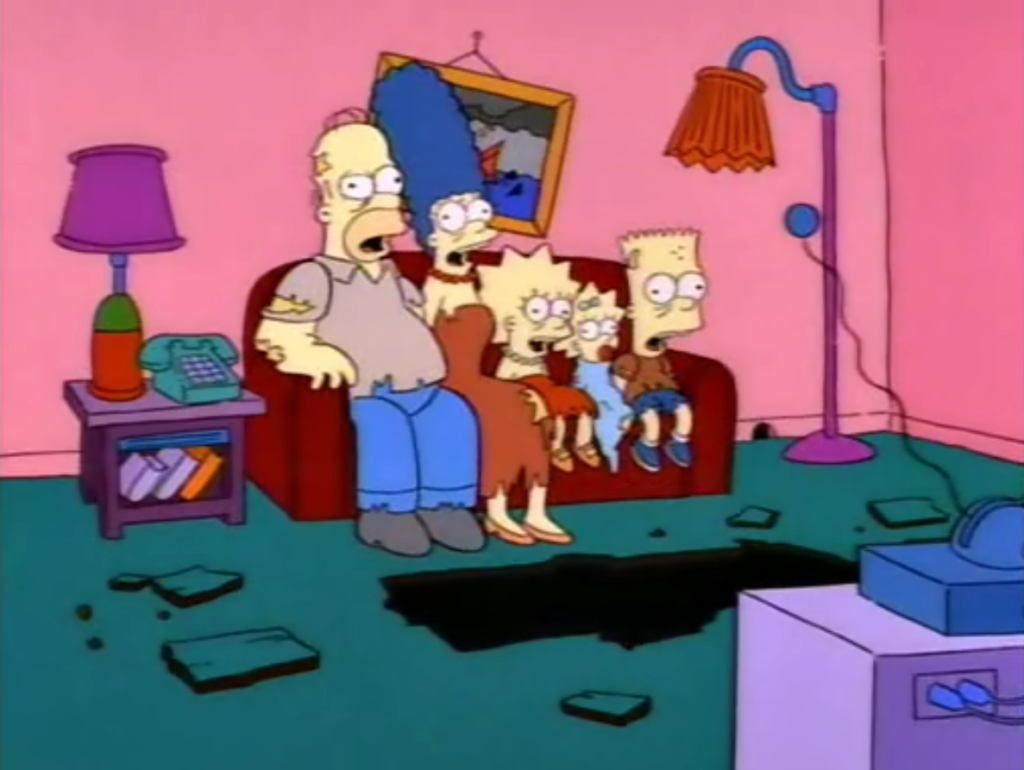
— So… they’re watching TV and we’re watching them. And what does that make us? Mindless zombies, of course!
And, in that meta-fictional/viewing moment, what made The Simpsons a cut above everything else in the vast cultural wasteland of 90s-era broadcast TV, and so ended yet another effortless week of staggeringly referential brilliance.


